New on RaceFans
- Famin insists Ocon and Gasly are “happy” at Alpine despite struggles
- Wehrlein wins second Misano race after Rowland’s last lap heartache
- Will Alonso win a world championship title with Aston Martin?
- Da Costa disqualified from first Misano race, handing Rowland win
- Vowles setting up Williams for “almost three years worth of work in one”
- Da Costa becomes sixth different winner in six rounds in first Misano race
- “Am I in a race here or what?”: How Ferrari aced their Suzuka strategies
- Caption Competition 240: Snoozuka
- Andretti set for “key meeting” as they continue efforts to join F1 grid in 2026
- Melbourne made season-opener again in 24-race F1 calendar for 2025


50 years ago today: F1’s worst tragedy at Monza
1961 italian grand prix flashback.
10th September 2011, 0:39 6th September 2023, 13:43 | Written by Keith Collantine
On this day 50 years ago, a crash during the Italian Grand Prix claimed the lives of 16 people.
Wolfgang von Trips and 15 spectators were killed on the second lap of the race at Monza after von Trips tanlged with Jim Clark .
However the race continued and von Trips’ Ferrari team mate Phil Hill won the world championship on this bleak day for Formula 1.
Monza’s perilous oval
Fifty years ago, safety was not the paramount concern it is today. But when it came to the daunting banked oval circuit at Monza, some felt it was a risk too far.
In 1960 a group of British teams boycotted the race in protest at the use of the banking. For 1961 engine capacities were cut to 1.5-litres, speeds fell, and while the same teams still objected to the banking they agreed to race on it once more.
The race organisers made one concession, reducing the distance from 50 laps to 43. Even so, at 430km (267 miles), this was around a third longer than tomorrow’s race will be.
The first half of the lap took the drivers around the circuit as we know it today, albeit without the chicanes. But on returning to the main straight the cars stayed to the right, the track divided by a line of cones down the middle.
This led them to the first of two 180-degree corners. These were fashioned from slabs of concrete propped up on concrete supports at a steep angle. With time, the surface had become increasingly worn and rippled, causing cars to buck violently on their suspension as they took the corners.
Even so, the drivers were able to tackle the corners without lifting at 255kph (160mph). The second of these bends returned them to the start/finish line and the end of the 10km (6.2 mile) lap.
A championship between team mates
Ferrari had reacted to the reduction in engine capacity for the 1961 season better than anyone. The Scuderia produced the benchmark car in the 156 ‘Sharknose’, powered by its V6 ‘Dino’ engine.
Heading into what would be the penultimate round, Wolfgang von Trips had amassed 33 points to the 29 of team mate Phil Hill .
Hill had won at Monza 12 months earlier, while von Trips suffered crashes in two previous visits to the circuit. Five years earlier his steering had broken at Curva Grande, sending him into the trees at 190kph (120mph). Two years after that he crashed into Harry Schell’s BRM on the first lap.
The championship protagonists were two decidedly different characters. Von Trips, a German Count, was a natural talent but one with a slightly wild streak in his early years that led him to be dubbed ‘von Krash’. Later his rivals referred to him more affectionately as ‘Taffy’.
Hill was more technical in his approach and had great mechanical sensitivity. Earlier that year he won the Le Mans 24 Hours for the second of three times in his career .
Hill was also acutely aware of the dangers of motor racing. It weighed heavily on his mind, and at times caused him to develop stomach ulcers from the stress, which disrupted his racing season in 1954.
Lotus were the only threat to Ferrari in the constructors championship, and a distant one. Stirling Moss had scored two remarkable wins with his Rob Walker-run Lotus at Monaco and the Nurburgring, which gave the team an outside chance of out-scoring Ferrari.
A huge entry of 37 cars was presented and 32 ultimately made it onto the grid. A cut-off limit was imposed on qualifying times, though it was rather less strict than today’s 107% rule: it eliminated drivers who failed to get within 15% of the second-fastest time.
With von Trips on pole the second-fastest time was set not by Hill but their new team mate, Mexican Ricardo Rodriguez. This was despite the 19-year-old having the older 60-degree V6 instead of the 120-degree unit used by his team mates.
While the young arrival dazzled with his speed, Hill later revealed concerns about the newest addition to the Ferrari driver roster, saying: “If he lives, I’ll be surprised.” Sadly, Rodriguez lost his life before the end of the following season, crashing in practice for the first Grand Prix in his home country.
Hill, fourth on the grid behind another Ferrari belonging to Richie Ginther, felt his engine was down on power and had his mechanics change it. A broken valve spring was found and Hill oversaw the repairs and ensured the new installation was to his satisfaction.
The highest non-Ferrari on the grid was Graham Hill’s BRM. During practice he had his first run in the P578, which would take him to the world championship the following year. For the race he switched back to his regular P57.
Stirling Moss also used a new development V8 engine from Climax during qualifying. But he suffered cooling problems and overnight switched to Innes Ireland’s factory Lotus using a four-cylinder engine, while retaining parts from his own machine. This left Moss driving a car he was unfamiliar with in the race, with an unusual livery part Lotus green and part Rob Walker blue.
Starting from pole position, von Trips could clinch the championship the following day. But that evening, sitting in a cafe with journalist Robert Daley, he revealed his own concerns about mortality.
“It could happen tomorrow,” he said, as reported in Daley’s book The Cruel Sport . “That’s the thing about this business. You never know.”
1961 Italian Grand Prix grid
Von Trips’ pole position time of 2’46.3 for a lap of the 10km (6.2 mile) track was 2.7s off the previous year’s lap record set with more powerful cars.
Rodriguez was just a tenth of a second off, setting the 115% cut-off time at 3’11.36. This meant Andre Pilette failed to qualify by less than three-tenths of a second.
The tragedy
Race day dawned hot and activity at the circuit began with a pair of three-hour races for GT cars. At 3pm, the F1 cars were on the grid awaiting the start.
The Ferraris were using long gearing for the high-speed straights, and moved away as the race began. That allowed Jim Clark , who started seventh in his Lotus, to get in among them, briefly holding second.
At Parabolica Gerry Ashmore’s Lotus spun off and hit the grass bank along the track and the driver was badly injured.
A trio of Ferraris led the field as they came off the Curva Sud Alta Velocita for the first time to complete lap one, Hill ahead of Ginther and Rodriguez. Clark lay fourth with Jack Brabham , von Trips and Baghetti behind him.
Halfway around the second lap, Clark had fallen behind von Trips and was trying to re-pass the Ferrari as they sprinted from Vialone to Parabolica.
“I was preparing to overtake him and my front wheels were almost level with his back wheel as he started to brake,” Clark described afterwards.
“Suddenly he began to pull over towards me and he ran right into the side of me. I honestly don’t think Taffy realised I was there. I am sure that, when he passed me earlier, he had decided his was the faster car and I would be left behind.”
Clark was on the left-hand side of the track as von Trips moved across. The contact fired the Ferrari left towards the crowd.
It rode up a 1.5m-high bank and flipped over. With only a chain fence between the spectators and the track, there was precious little to separate car from bodies.
The car gouged into the crowd before flipping back onto its wheels on the track. Following cars braked hard and ducked around the wrecked Ferrari.
Von Trips was thrown from his car and killed, 11 spectators died at the scene, and four others succumbed to their injuries over the following days.
(Different figures have been given for the total number of people who lost their lives. Motorsport Memorial lists those understood to have lost their lives due to the crash by name.)
Only those close to the accident knew what had happened. Many, including the circuit commentators, remained unaware of the scale of the crash. Hill, still leading, could tell from his pit signals that von Trips was out but had no idea of the extent of the carnage.
The video below shows scenes from the race but does not include any of the harrowing footage of the crash and its aftermath:
The race goes on
Despite the carnage, the race continued. Hill and Ginther pulled out a 20-second lead and briefly swapped places. But one by one technical problems claimed the Ferraris: first Baghetti, then Rodriguez and finally Ginther on lap 24. Hill’s was the only one still running at the end of the race.
Brabham pulled over after eight laps, his new V8 Climax engine running low on water. He had witnessed the crash and said: “I don’t think either Jimmy Clark or Taffy von Trips were carving each other up as was suggested at the time.
“Jimmy was always a driver you could drive really hard against and be quite confident that he wasn’t going to do something stupid.”
Moss had worked his way up to second place before the pounding dished out by the banking caused a wheel bearing to fail.
After two hours and three minutes of racing, Phil Hill crossed the finishing line. The muted response from his team and the expression on the face of chief engineer Carlo Chiti told Hill something was wrong.
He went through the motions of the prize-giving. With von Trips dead, Hill’s victory had made him world champion. But there was to be no celebration.
1961 Italian Grand Prix result
The dreadful loss of life was the worst seen in a world championship race. It was one of a series of fatal accidents involving spectators including the 1953 Argentinian Grand Prix (13 killed), 1955 Le Mans 24 Hours (84), 1957 Mille Miglia (11) and 1958 Cuban Grand Prix (seven).
As had happened previously, the crash led to further calls for motor racing to be banned. In response Ferrari withdrew their cars from the last round of the championship, at Watkins Glen.
Hill was unimpressed by what he thought was an insincere gesture. Ferrari, he believed, would have kept racing had they not clinched both championships at Monza. Instead of racing in front of his home crowd Hill toured a lap of the circuit in a convertible.
Although the crash did not happen on the banked circuit, that course was never used again for F1 and was abandoned after 1969.
Some contemporary reports of the race expressed the view that adequately protecting fans from such accidents would be impossible without moving them so far away from the action it would lose its appeal.
Fifty years on, this claim no longer holds up. Today the stretch of track approaching Parabolica is bordered by a double-height debris fence.
But containing an accident at the fastest circuit on the F1 calendar remains a challenge. In 2000 marshal Paolo Ghislimberti was killed when he was struck by debris in a first-lap crash at the Variante della Roggia.
Grand Prix flashback
- Schumacher seals record-breaking 10th constructors championship for Ferrari
- Strategic superiority clinches Schumacher’s first Ferrari title
- Disaster for Hakkinen brings title within Schumacher’s grasp
- Schumacher turns the tide against McLaren on tragic day at Monza
- Hakkinen stuns Schumacher with three-wide pass for fourth win
Author information
Keith Collantine
Got a potential story, tip or enquiry? Find out more about RaceFans and contact us here .
33 comments on “50 years ago today: F1’s worst tragedy at Monza”
TommyB (@tommyb89) 10th September 2011, 1:01
The idea of splitting the straight in half so they could use the banking is absolutely insane. What an incredible circuit though.
I would really love to visit the banked oval one day. I’ve been to Monza but wasn’t sure how you got onto it.
Back to the Von Trips incident, what a tragedy. For it to happen to the championship leader in a Ferrari at Monza too.
Did I read some time ago that they were going to make this story into a movie?
Jay 10th September 2011, 2:18
Under the original configuration, when did the teams pit? Was it mid lap, prior to heading around the banking, or did they cross over again at the end of the lap if needing to pit?
The former sounds quite unique (then again so is the track); the latter sounds quite dangerous.
Can anyone enlighten me?
SonyJunkie (@sonyjunkie) 10th September 2011, 7:32
When I race the full circuit on rFactor you come out of the pits and straight into the oval section and the if you want to pit you come in after going round Parabolica.
So I would say it would be mid-lap!!
Q85 10th September 2011, 11:14
i played it years ago on R-Factor. it was an amazing track
UKfanatic (@) 10th September 2011, 15:37
It can be played in Ferrari Challenge Trofeo Pirelli.
Mike the bike Schumacher (@mike-the-bike-schumacher) 10th September 2011, 2:19
The crash really effected Jimmy Clark too. The Italian police treated it as a road accident and the Italian media really turned on Jimmy. I’m not sure if he went to court over it, but it did get very serious for him.
Also, I recently read on the Ferrari website that none of the famous sharknose cars survive. Enzo had them destroyed for whatever reason, not sure if it was just because of the accident, shame though.
Kenny 10th September 2011, 4:48
I think Clark was questioned twice, and the Italian police wanted to question him a third time but he refused to go. As far as I know there were no court sessions.
Fixy (@) 10th September 2011, 10:35
I remember reading the cars were designed by a designer which left Ferrari the following year, thus “betraying” Ferrari according to Enzo, which didn’t want to keep the cars designed by a betrayer.
BasCB (@bascb) 10th September 2011, 12:10
I heard that story as well Fixy
Alex W 10th September 2011, 2:51
Stomach ulcers are now known not to be caused by stress, but thanks for the very interesting article. I do have one question, why doesn’t F1 have just one race on an oval? As you have highlighted, banked ovals have been used in europe in the past, surely the modern American oval would be up to safety spec for a very interesting USGP….
Alfie 10th September 2011, 8:14
Oval + F1 is a novelty that would wear off quick to be honest..a race on a oval + road circuit, at say, Monza? That would be cool.
George (@george) 10th September 2011, 14:48
Well we raced on part of the oval at Indy. I think it would have to be a roval anyway, and apart from Indy the only decent one I can think of is Daytona.
markymark715 30th April 2013, 23:09
Stress does not cause ulcers but it can certainly worsen existing ones.
Shimks (@shimks) 11th August 2016, 13:11
I have had stomach ulcers and they were unequivocally stress-related.
Atticus 10th September 2011, 8:09
http://www.youtube.com/watch?v=w0-9Mls-5E0
This shows the accident as well. At about 1:10.
Anybody fancy a similarity between von Trips and Hamilton in the initial movement of their car?
Passing, having about 90% of a car advantage then pulling left under braking, making contact and heading straight towards whatever is next to the track on the left.
Hamilton and the Belgian crowd were much more lucky though. Thanks to safety regulations. And don’t forget, Hamilton suffered a brief faint due to the angle he hit the fence. I know you have to hit the barriers at almost the exact same angle for this to occur, but without HANS probably von Trips did not make it through the first impact.
I don’t know how he died though – on track or in the hospital. I just made an assumption.
David B (@david-b) 10th September 2011, 8:33
Thanks, this is so clear, even if even quite harsh…
Keith Collantine (@keithcollantine) 10th September 2011, 11:16
You’re thinking about Hamilton’s collision with Kobayashi at Spa? I must admit, the thought did cross my mind.
Atticus 10th September 2011, 17:50
Yep, that one.
Circumstances changed alot, thank God. Even if there had been spectators at the Armco in Lewis’ case they would walk off on their own legs – the Armco was there in the first place. That one marshall who patrolled nearby was not hurt.
Armco is not a safety newbie nowadays as we know it, but it was back then. I remember Spa getting Armco only in 1970. Nevertheless Monza was in an awful state regarding safety at that time.
Bleu 10th September 2011, 8:12
The wide start/finish straight at Monza is still reminding us of the days when oval was being used.
David B (@david-b) 10th September 2011, 8:16
Even if there haven’t been many occurances in the last period (luckily!), I still think contact between wheels and “springboard” effect is the hardest danger in open wheeled car races. To prevent bad accidents I think FIA should think about something to avoid that (I know every device would appear horrible…). Just a feeling, but when two cars struggle wheel to wheel at high speed my worse fear is they touch and one flies to the crowd…it is everything but impossible… (Of course I hope I’ve not been a bad predictor…)
David B (@david-b) 10th September 2011, 8:35
Actually Clark and Von Trips didn’t jump on each other’s wheels, I see.
gabal (@gabal) 10th September 2011, 11:50
That is why there are fences for debris and run-off ares so the public is protected. The latest fatalities in the sport included track marshall and a fireman which were standing right next to the opening in the fence which is used to wave flags through. Those openings were modified after the death of a fireman in Australia. In short, I don’t think there is a danger for spectators on modern F1 tracks – even on a street circuits.
David B (@david-b) 10th September 2011, 8:20
Curious there was a restaurant at the bottom of the main gran stand!!! Sixties were incredibly fashioning.
Alex Bkk 10th September 2011, 9:46
Jochen Rindt and Ronnie Peterson both @ Monza as well. Nice piece Keith.
Steph (@) 10th September 2011, 11:03
Brilliantly written and informative article on an absolutely tragic weekend. There was a doc on Clark (along with Hill and Stewart) where I think it said that Jim got a lot of blame for the accident in Italy irrc which I find horrible. It was awful for von Tripps who seemed like a great talent for the sport but it was equally horrendous that fans who loved the sport lost their lives.
I’m always amazed that when drivers bang wheels and sidepods today (I can’t help but think of one famous incident in the 90s which for me highlights how far safety has come) that the effects are far more tame than what happened here. I guess it goes to show the evolution of safety and the cars as most of the time they can carry on their way without a second thought.
Alex Bkk 10th September 2011, 11:19
Ditto Steph… F1 was losing drivers at a rate of over 1 a month in the fifty’s, sixty’s and seventy’s …
http://en.wikipedia.org/wiki/List_of_Formula_One_fatal_accidents
Mike 10th September 2011, 13:04
Nice write-up Keith.
UKfanatic (@) 10th September 2011, 15:48
We british tend to talk alot about Jim Clark. Its undeniable how great he was, fortunately he got the crown before he died. The german, Von Trips was arguably the best Ferrari driver at the moment and maybe the best F1 driver at the time, still is rather unknown and so are a large number of great drivers from the time large number of those deceased racing or testing, I advise anyone to watch the fantastic documentaries about F1, the Grand prix series which analises year by year racing on the golden era 50-60-70, the gentleman era.
S.J.M (@sjm) 10th September 2011, 19:55
Firstly, what documentries? Ive seen the 1hour long ones for the 1970’s but none for the 2 previous decades.
secondly, its sad to think the majority of fans that dont have a big knowledge of F1 knows about drivers like Von Trips and his contempories, its a fasinating period to look up. Sad as it is Von Trips was killed on the edge of winning the WDC, but prior to his death, he’d established a go-kart circuit that was later leased to a Mr Schumacher whose sons first raced at and thus, Germany got its German WDC winner.
AndrewTanner (@andrewtanner) 11th September 2011, 7:18
I desperately tried to get on the oval a couple of days ago but we were told to get lost basically. Once you’re there you really do have an appreciation for just how steep it is, oh could not afford to go anything less than flat-out, just to maintain momentum. Obviously, as witnessed in 1961, that carries its own risks.
These articles are well constructed but are so harrowing at the same time.
Formula 1 is a world away from what it was 50 years ago but these stories should be heard by all fans, old and new.
mimitoucourt 18th December 2011, 18:18
well sad memories…
Dubai call girls 25th March 2017, 6:46
It’s in fact very complex in this active life to listen news on Television, therefore I just use internet for that reason, and obtain the newest news.
Stefan von Druner 30th October 2018, 18:30
Definitely not Clark’s fault. If you slow it down, you can see Taffy move into him. Why did Taffy do that? Maybe to get a racing line, maybe mechanical. We probably will never know now.
Comments are closed.
- Dark Mode Toggle
ScuderiaFans.com
Video: wolfgang von trips’ fatal crash at monza in 1961 from two angles . wolfgang von trips and his ferrari barreling towards a spectator's camera, monza 1961 ..
During the Italian Grand Prix on September 10, 1961, Wolfgang von Trips found himself in a fierce competition for the Formula One World Drivers’ Championship against his teammate Phil Hill. Unfortunately, on the second lap of the race at Monza, von Trips’ Ferrari collided with Jim Clark’s Lotus near what is currently known as Curva Alboreto. The impact caused his car to become airborne, crashing into a side barrier. Tragically, von Trips was fatally ejected from the car, and the incident resulted in the loss of fifteen spectators’ lives.
Watch Wolfgang von Trips and his Ferrari barreling towards a spectator’s camera, Monza 1961
— see video above —
Image source: reddit.com/user/iForgotMyOldAcc
Buy official Ferrari F1 products!

Leave a Reply Cancel reply
Save my name, email, and website in this browser for the next time I comment.
Scuderia Fans
Gear up with ferrari merchandise.
Play-Pennsylvania

#KeepFightingMichael
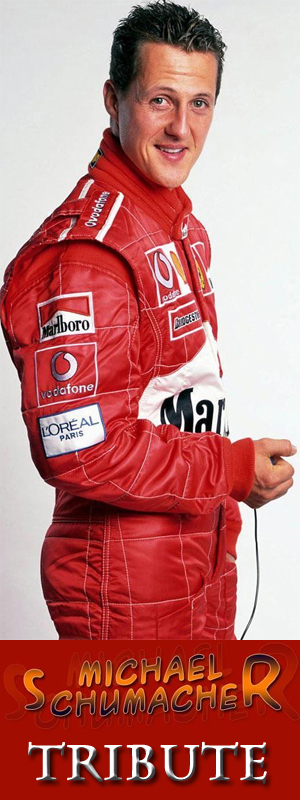
best online casino
Personal Injury Lawyer in Abilene Texas
Formula 1 Standings
Formula 1 News
Guitar Junky
Best Intraday Tips
Contact Center Company
SilverArrows.Net - Mercedes F1 news
Esports Forum
Racing Statistics
Fixture Calendar
Live F1 Results

September 10: Formula One driver Wolfgang von Trips died in a horrific crash that killed 15 spectators at the Italian Grand Prix on this day in 1961. The German racer, who was on course to win that year’s championship, clipped Briton Jim Clark’s Lotus, which catapulted his Ferrari into the crowd. Von Trips, 33, the wealthy playboy son of a noble Rhineland family, was thrown from the airborne car and died after hitting the ground at the notorious Monza circuit.
[ On This Day: Racing driver Bill Vukovich dies in Indianapolis fireball crash ]
In the aftermath, Clark, who would also later die racing in 1968, revealed how the accident happened.
“Von Trips and I were racing along the straightaway and were nearing one of the banked curves, the one on the southern end,” he said. “We were about 100 metres from the beginning of the curve. “Von Trips was running close to the inside of the track. I was closely following him, keeping near the outside. “At one point Von Trips shifted sideways so that my front wheels collided with his back wheels. It was the fatal moment.
[ On This Day: Farnborough Air Show tragedy kills 29 ]
“Von Trips's car spun twice and went into the guardrail along the inside of the track. Then it bounced back, struck my own car and bounced down into the crowd.” Von Trips had been leading the 1961 Formula One World Drivers Championship and needed only third place in Italy – the penultimate Grand Prix – to win the competition. A British Pathé newsreel filmed Phil Hill, who became the only American to clinch the title after winning the race, receiving his trophy not knowing about his rival’s fate.
But, in an era when drivers were expected to dice with death while earning in their careers what Lewis Hamilton makes in a race, fatal crashes were fairly typical. In the 1960s race organizer were not that interested in safety and that decade alone saw 14 F1 drivers die. That began to change with the death of Clark, a highly charismatic star who was probably the best-loved racer of that era. The death toll slowly began to fall, with 12 drivers dying in the 1970s and four in the 1980s. No racer has died in a grand prix since Brazilian world champion Ayrton Senna lost his life after a crash at San Marino in 1994.
[ On This Day: Le Mans crash kills 83 fans ]
Altogether, 49 F1 drivers have lost their lives in racecars. Von Trips, who had twice been injured after crashing at previous Italian Grand Prix events, helped fellow German Michael Schumacher become an F1 legend. A go-kart track he opened at Kerpen, near Cologne, was later leased by Rolf Schumacher, who taught his oldest boy and other son Ralf how to race there. In 1992, Michael Schumacher, who also raced for Ferrari, became the first German to win a full-length grand prix since Von Trips’s 1961 victory in Britain. He went on to win a record seven championships and is widely regarded as the best ever F1 driver.
Latest stories
Hen party flee scottish retreat after spotting 'tragic little boy' in photo.
The group of friends were giving their pal a send off ahead of their wedding whilst staying at a remote estate in Argyll and Bute.
BBC Antiques Roadshow couple 'storm off' after hearing valuation of item
Fiona Bruce said they even dumped it on the way home
Wayne Rooney pulls out of Match of the Day role as Man United legend makes painful announcement
Former Manchester United player Wayne Rooney has explained his absence from BBC's Match of the Day on Saturday night
Shoppers in disbelief as Imperial Leather reveals 'hidden use' for iconic soap bar stickers
A spokesperson for the brand confirmed that the sticker isn't just for decoration, after its durability sparked a conversation on social media
UK holidaymakers hit out as they slam 'desperate' new Spain holiday rule
Brits have been left fuming after Spain introduced a new rule for holidaymakers, with many vowing to never return to the country as they hit out at the 'desperate' move
Inside Paddy McGuinness’ stunning two stone weight loss in just five weeks with key diet change
TV star Paddy McGuinness showed off his impressive two stone weight loss in just five weeks, after making a simple change to his diet and focusing on an exercise regime
Couple find 'room of horrors' in their home four years after moving in
A couple were left horrified after discovering a hidden room in their home
Fresh footage emerges of Glasgow motorway brawl that brought road to standstill
Two woman were videoed brawling on the M8 at around 11.15am on Friday.
Researchers say two superfoods prevent dementia, reduce risk of dying early and help avoid cancer
The items which can be bought in any supermarket don't even have to be eaten in big quantities
How many horses died at the 2024 Grand National?
There have been more tragic scenes at the Grand National festival this year
UK tourists 'simply won't go' to Spain over new £97 rule
"The money rule shows how desperate they are for our cash."
Drivers urged to make essential check or face £1,000 fine and have car clamped
Experts have issued the warning before setting off on any journey or it could end up with cars being clamped
Strictly's Janette Manrara issues stark health warning to fans as she undergoes 'treatment'
Strictly Come Dancing star Janette Manrara has opened up about undergoing microneedling treatment in an attempt to rejuvenate her skin after not wearing sun cream
Kate Middleton and Prince William 'won't meet Harry' on UK visit for 'very personal reason' – 'Even though he's reached out'
EXCLUSIVE: The Duke of Sussex is set to return to the UK next month, but is not expected to meet with the Prince and Princess of Wales for 'a very personal reason'
Jamie Laing makes shocking confession about sex with wife Sophie Habboo
Jamie Laing and Sophie Habboo met when they were both cast on Made in Chelsea and married last year, but Jamie has since revealed a shocking confession about their relationship
Escape to the Country's Jules Hudson laughs at gobsmacked couple who thought 'dream' house was over budget
They couldn't guess the price of their 'dream' home
UK Drivers over certain age could face 'mandatory' fitness test after DVLA update
The DVLA recorded over 40 million people with a licence in the UK last year, according to figures.
'72-hour heatwave' to hit parts of England, according to weather maps - but two areas will miss out
Weather maps reveal that while many will enjoy a mini April heatwave, some will still face April showers
A Place in the Sun star Laura Hamilton on secret health battle
Laura appeared on BBC Pointless Celebrities alongside close friend Jasmine
Meghan Markle's brother launches vile online campaign of abuse against Duchess
Megjson Markle is being targeted by half brother Thomas Markle Jr in a series of vile insults and bizarre conspiracy theories on his YouTube channel.
- Quick Takes
- Revs Library
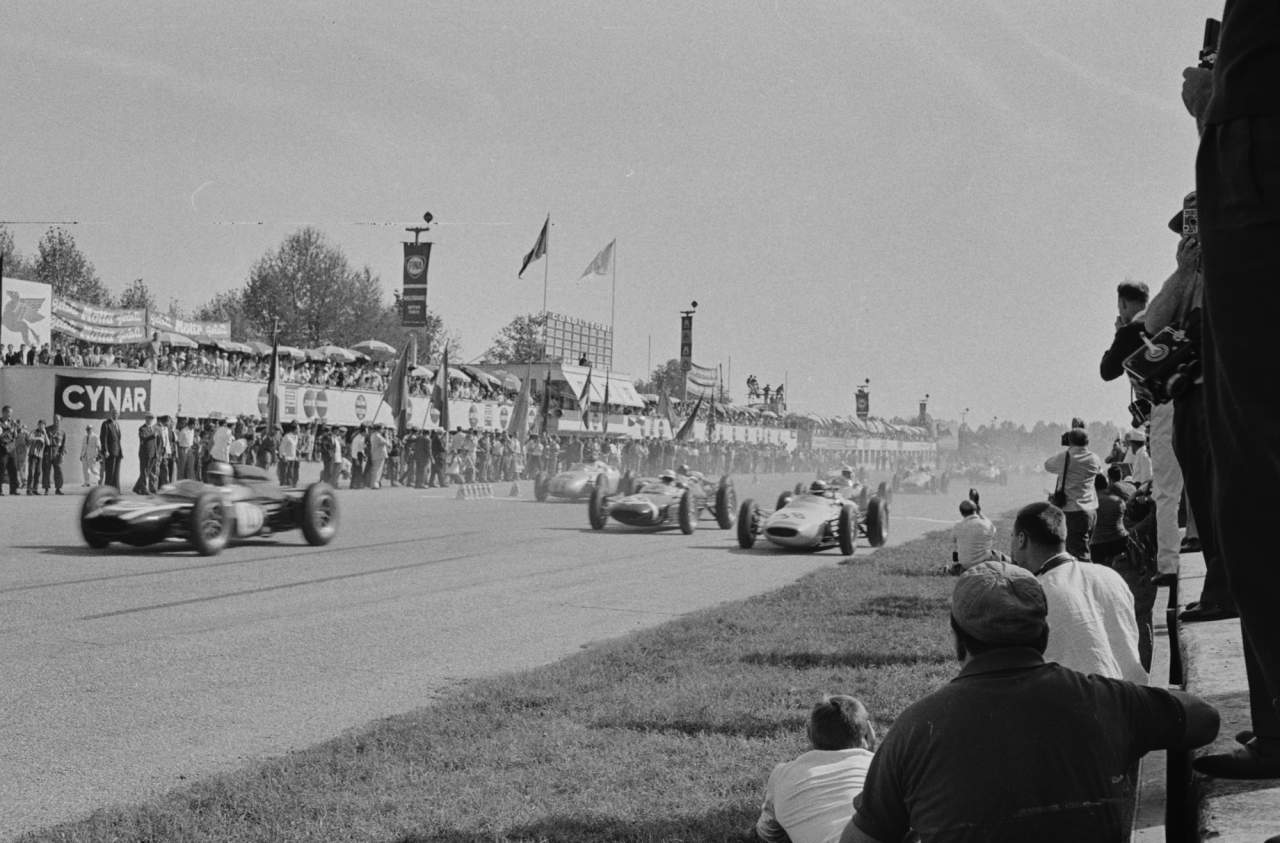
Tragedy Within Triumph: Hill and Andretti at Monza
America's only Formula 1 champions each experienced tragic loss on the day of their biggest victories
BY: JOHN LAMM PHOTOS: ERIC DELLA FAILLE PHOTOGRAPH COLLECTION, REVS DIGITAL LIBRARY

I t was such a strange scenario. In the seven decades of the Formula 1 World Driver’s Championship, U.S. citizens have won it only twice — Phil Hill with Ferrari in 1961 and Mario Andretti with Lotus in 1978, the last 41 years ago.
And the circumstances under which they clinched their championships were tragically similar. This intertwining story involves the same day of the same month (September 10), the same racetrack (Monza in northern Italy) and the same run-up to the same sad finale.
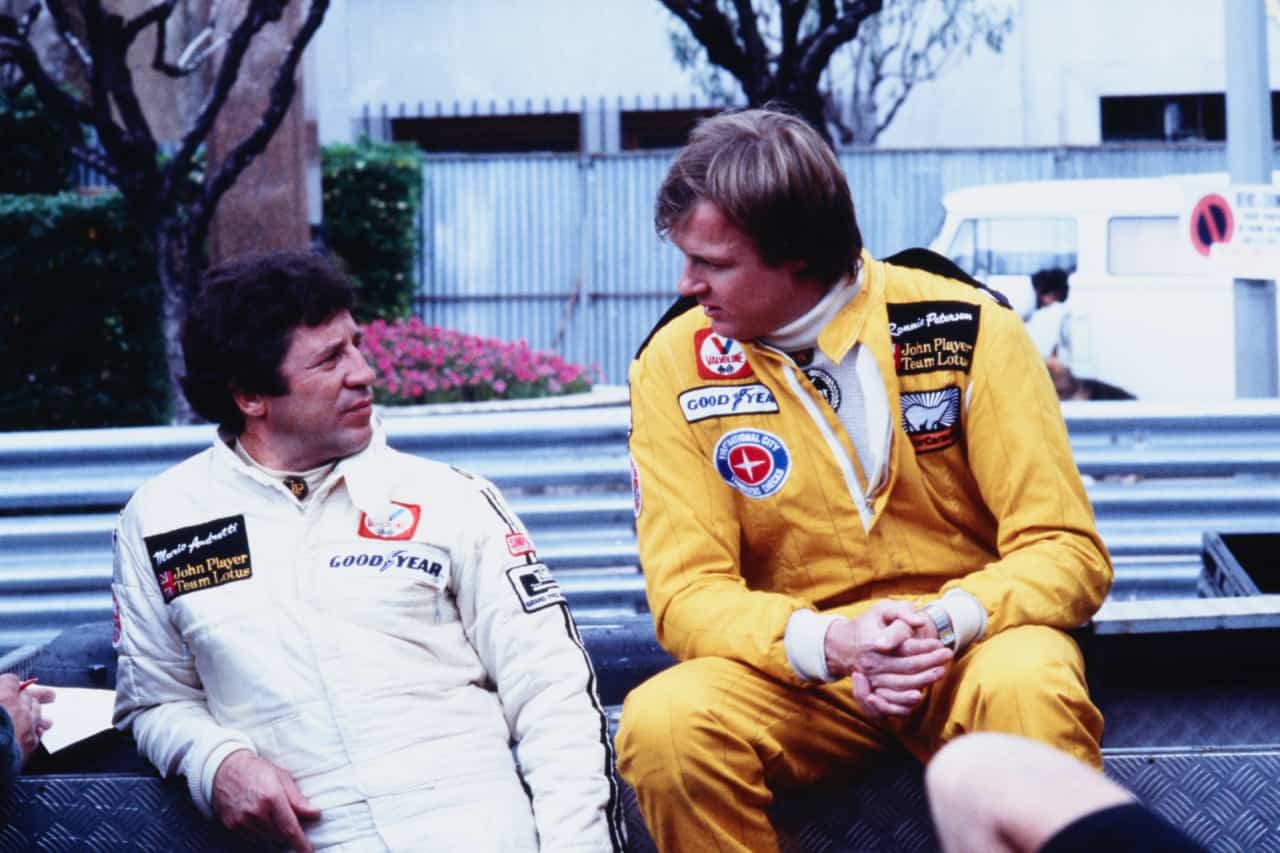
In their championship campaigns, Hill and Andretti each had season-long battles with a teammate: Hill versus the German Count Wolfgang von Trips (or “Trips,” as Phil simply called him), Andretti with Sweden’s Ronnie Peterson. Chillingly, both of their teammates died as the result of accidents within the first two laps of different editions of the Italian Grand Prix.
Shortly after Mario won his title, Phil and I met him in Ontario, California, then home to Ontario Motor Speedway. We were in a car, Mario driving, Phil also in the front seat while I sat in back, holding the tape recorder as the two Formula 1 champions talked about their titles and the tragic similarities of the circumstances in which they were won.
Part I: September 10, 1961
The drama for Phil Hill began well before the race at Monza. He knew the 1.5-liter V-6s in von Trips’ and his Ferraris were susceptible to valve problems if held at high revs for a long period of time. Pre-race testing had put the engines in that fragile state, so Hill wanted his engine replaced. Enzo Ferrari didn’t want to do it, but Hill didn’t back down.

“I insisted my engine be changed,” Hill said. “We stayed at a small country hotel, and knowing the little things that can go wrong in an engine swap — throttles not right when carburetors have to be quickly changed from one engine to the next — I was up at 6 a.m. the next morning to drive the car, to run things in a bit and try some standing starts.” He wanted to be certain that the problems he had been experiencing were solved.
“Right from the start of the race, I knew the engine had been the problem, because the car was its old self,” he said. “I was leading before the end of the first lap, only to come around on the second and find waving yellow flags, debris and an upside-down Ferrari.”
Von Trips had led the championship standings going into Monza, but on lap two, his Ferrari touched Jimmy Clark’s Lotus. The German driver’s car shot up an embankment and into the crowd, killing 15 spectators, before flipping back onto the track, tossing him out.
“How did I react?” Hill asked. “I didn’t know whose car it was until I came around and Trips’ number was missing from the pit sign. And then I didn’t dwell on it. I’d seen so many accidents in which the car was wrapped up like a pretzel and the driver had walked away.”

As the race progressed, Hill had other worries, watching his teammates disappear one-by-one from the list, wondering if their engines had failed and if his would be next. [Editors’ note: The other Ferraris did drop out with engine-related issues.]
“I was walking on eggshells, trying to win at the slowest possible speed and being as gentle as I could with the engine,” Hill said.
“When the race was over, the first thing I asked Chiti [Carlo Chiti, the Ferrari’s designer and team manager] when I got to the pits was, ‘How is Trips?’ There was sort of a guilt hanging on his face when he caught my eye, and he quickly sort of glanced away. At that instant, I knew Trips was dead. And yet seconds later he said: ‘He’s all right. Go on, ride the car up to where they want it.’ He tried to fake it and just wanted me to get up to the winner’s stand to enjoy the victory.”
That would never really happen. There was no party that evening. And in the morning, for Hill anyway, the happy feelings, almost disbelief, that he’d won the championship were countered by von Trips’ death. There was the funeral to attend, including the long, slow walk from von Trips’ castle to the cemetery. In the end, there never was a celebration.
“It may sound foolish now, but somehow I felt too involved in the death of Trips,” said Hill, always a deeply introspective man. “I wasn’t, of course, just another driver of another car. What I probably felt was that with all the lauding, there should also be some kind of guilt over it. I probably felt that it was appropriate to feel this guilt and not be bold and say, ‘Well, he screwed up.’ ”
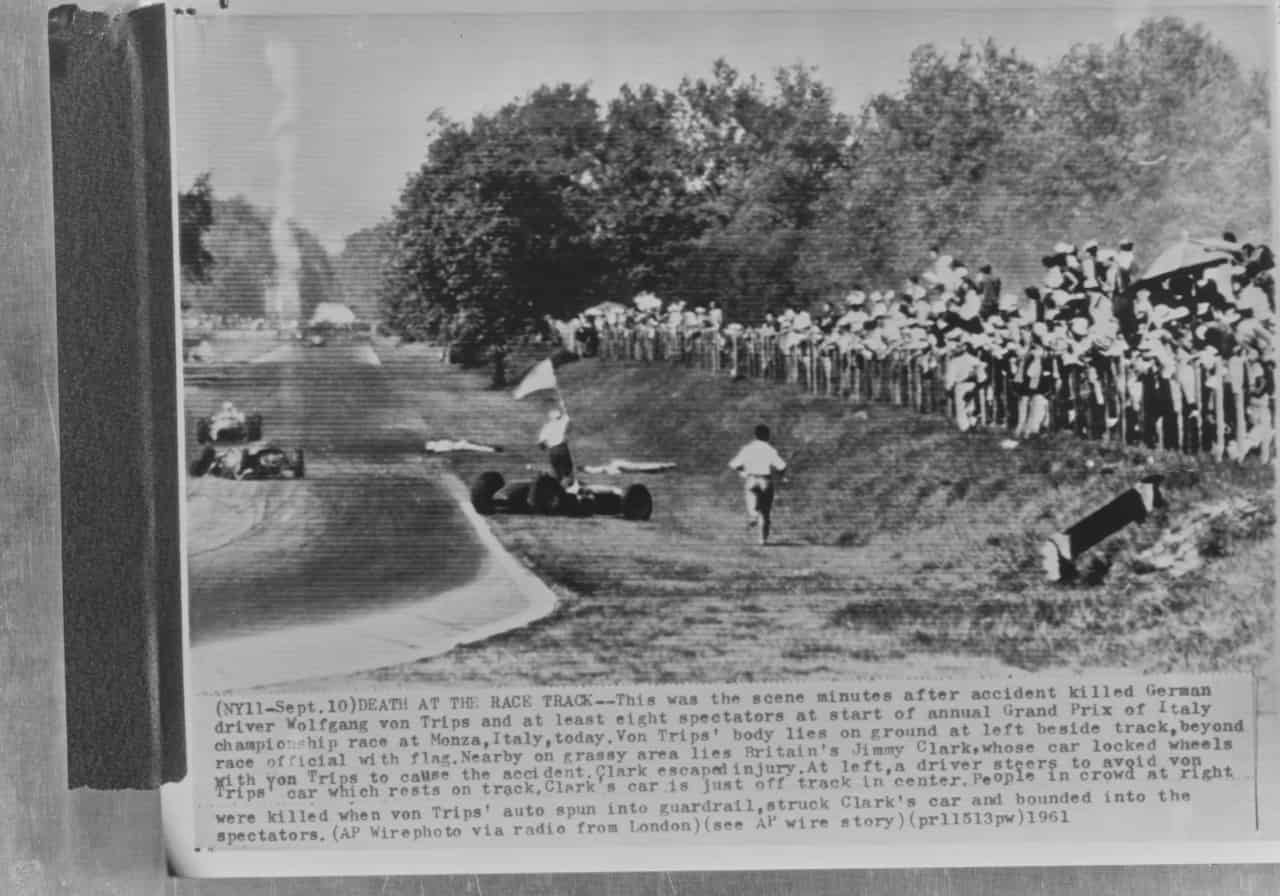
Ferrari didn’t race in the U.S. Grand Prix at Watkins Glen in 1961, and it also bowed out in 1962, so American fans never saw the famous shark-nose Ferraris race in the U.S., a great disappointment to Hill. Worse yet, Ferrari destroyed all those distinctive, twin-snout Grand Prix cars. Hill, a Californian, had spent many years racing in Europe during a deadly time in the sport’s history. When he finally had his hard-won title, he wanted to share it with his countrymen with the winning car. And that was denied him, something he regretted the rest of his life.

Part II: September 10, 1978
Locked in a battle with teammate Ronnie Peterson for the World’s Driving Championship, Mario Andretti in his Lotus and Canadian Gilles Villeneuve in a Ferrari were on the front row for the Italian Grand Prix. Peterson had qualified for the fifth spot in the second team Lotus. The start was a bit confused, and the cars funneled into a jam as they approached the chicane at the end of the front straight.
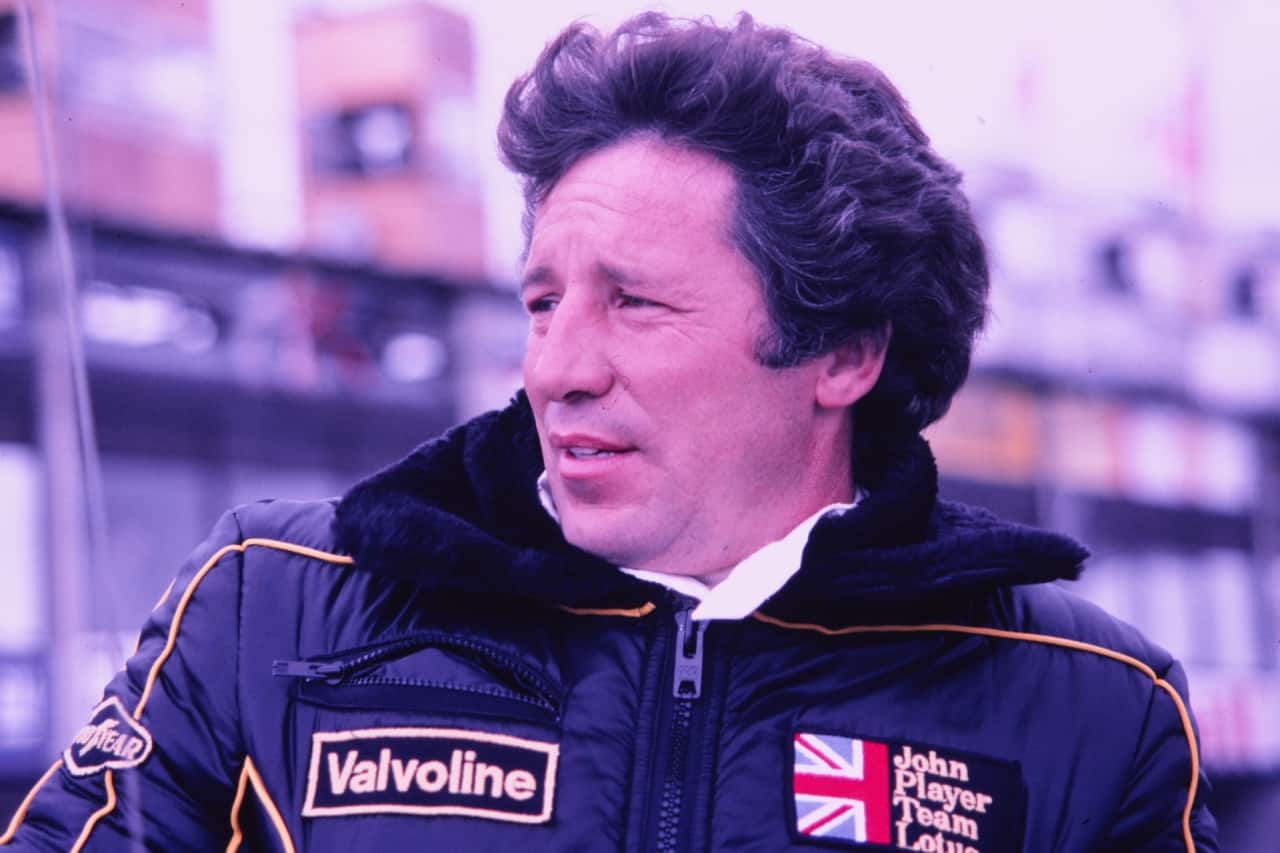
Peterson’s car was pushed into the guardrail on the right, where its front end was crushed. A total of 10 cars were involved, with Peterson’s catching fire. James Hunt, the Englishman with the well-earned reputation as a playboy, is credited with pulling him from the wreckage.
The race was immediately stopped. Andretti, during that Ontario interview with Hill, described getting back to Peterson at the scene of the wreck, “I saw him. He was conscious and didn’t look badly burned. He looked badly broken up, but I figured one thing that can mend on a young man is bones.
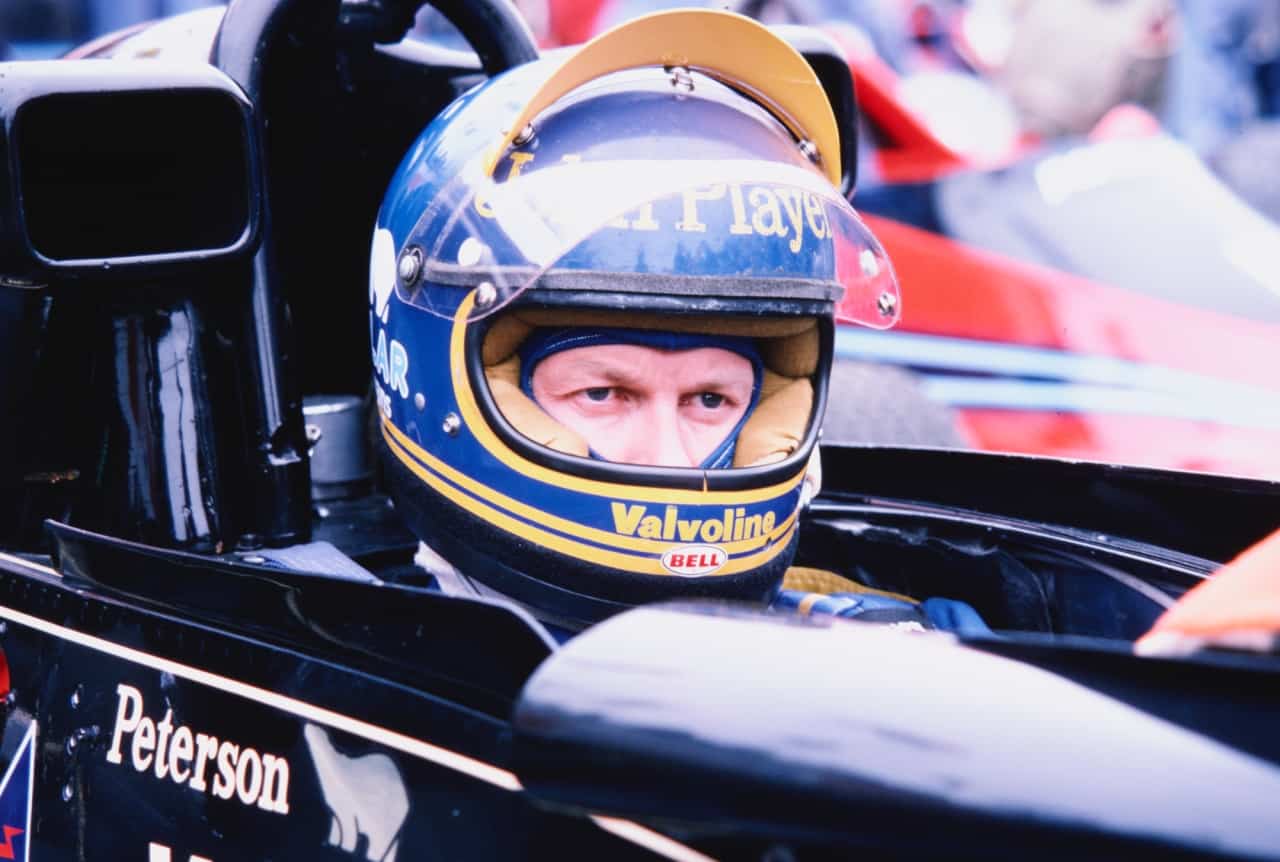
“So I felt no matter how bad, his long legs, they’ll put them right. I felt really, truly, sincerely sorry, even though he was the only one that could have contested my situation. I figured now he’s gonna watch the rest of the races on crutches, and I’m gonna have to heckle the s**t out of him and that sort of thing. I was just trying to think of the light side.
“Even though I felt okay — It’s only an injury, he’ll be on crutches for a couple, three months, and then he’ll be all right, I, honest to God… there was something in the back of my mind. I had a big lump of worry. There was something bigger. You know what I mean?”
After a long delay, the race was restarted, and Andretti finished fifth, good enough to take the title. Then it was time to tend to Peterson.
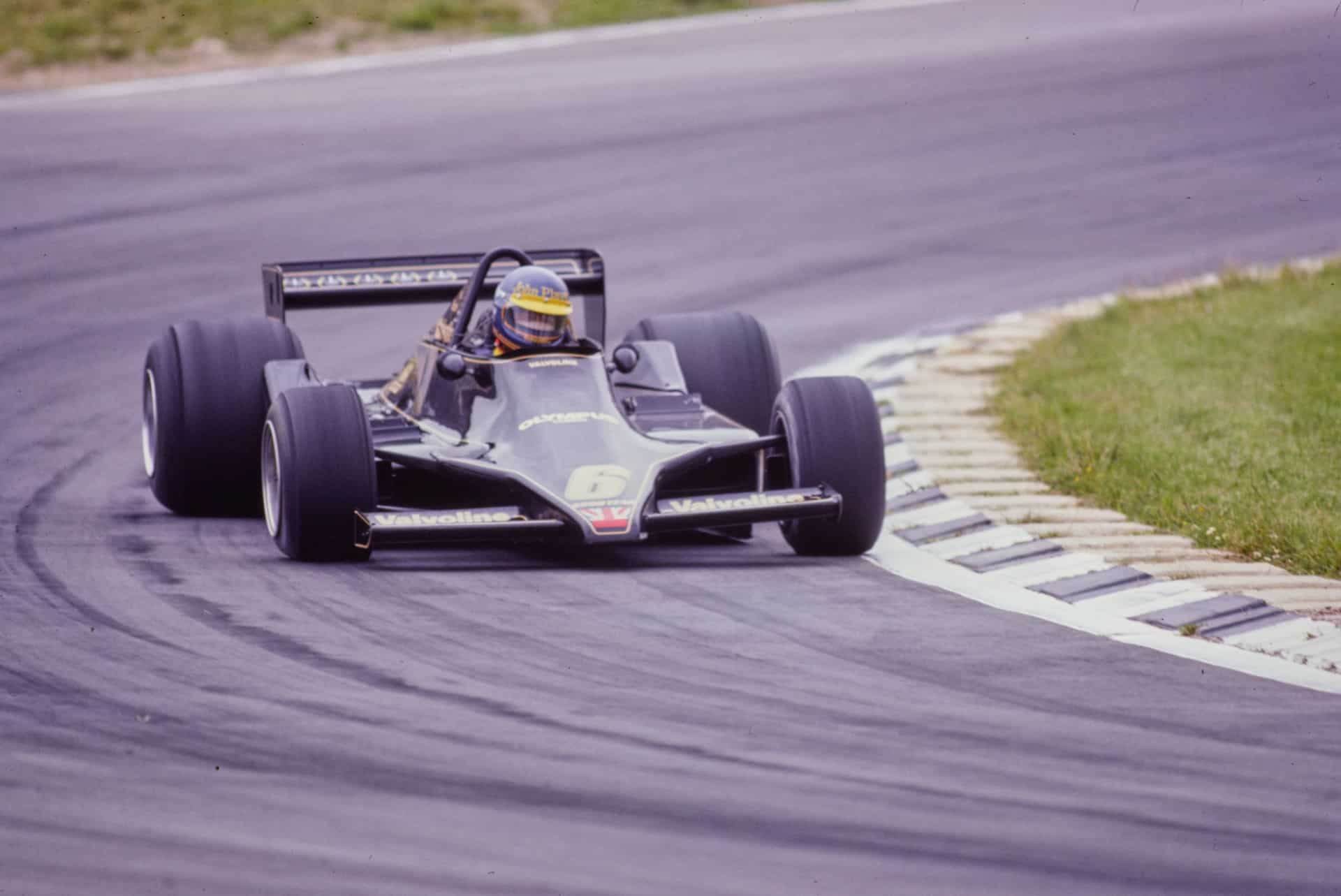
“We rushed from the track, over the crowd to the hospital with Colin [Lotus founder Colin Chapman],” Andretti said. “The decision was already made by his business manager to go ahead and operate.
“We had Professor [Sid] Watkins, who follows all the Formula 1 events, and Dr. Rafael [Rafael Grajales-Robles of Panama], who was for a long time Emerson Fittipaldi’s personal friend and physician. They were assisting, and coming in and out to keep us informed as to the progress. The biggest problem and concern was to restore circulation to his right foot, which was badly, badly mangled.
“About midnight, they came over and assured us that everything possible, in their opinion, was being done. Watkins said: ‘What the hell? There’s nothing we can do now, so you might as well get some rest. They’re going on the easier part, his left foot, which just straightforward fractures. But they’re nothing really shattered.’”
Andretti returned to his hotel that evening thinking that his teammate was on the road to recovery. He tried to raise the spirits of Chapman, who was taking Peterson’s injury hard, and the two discussed possible replacements for the injured driver to finish the season.
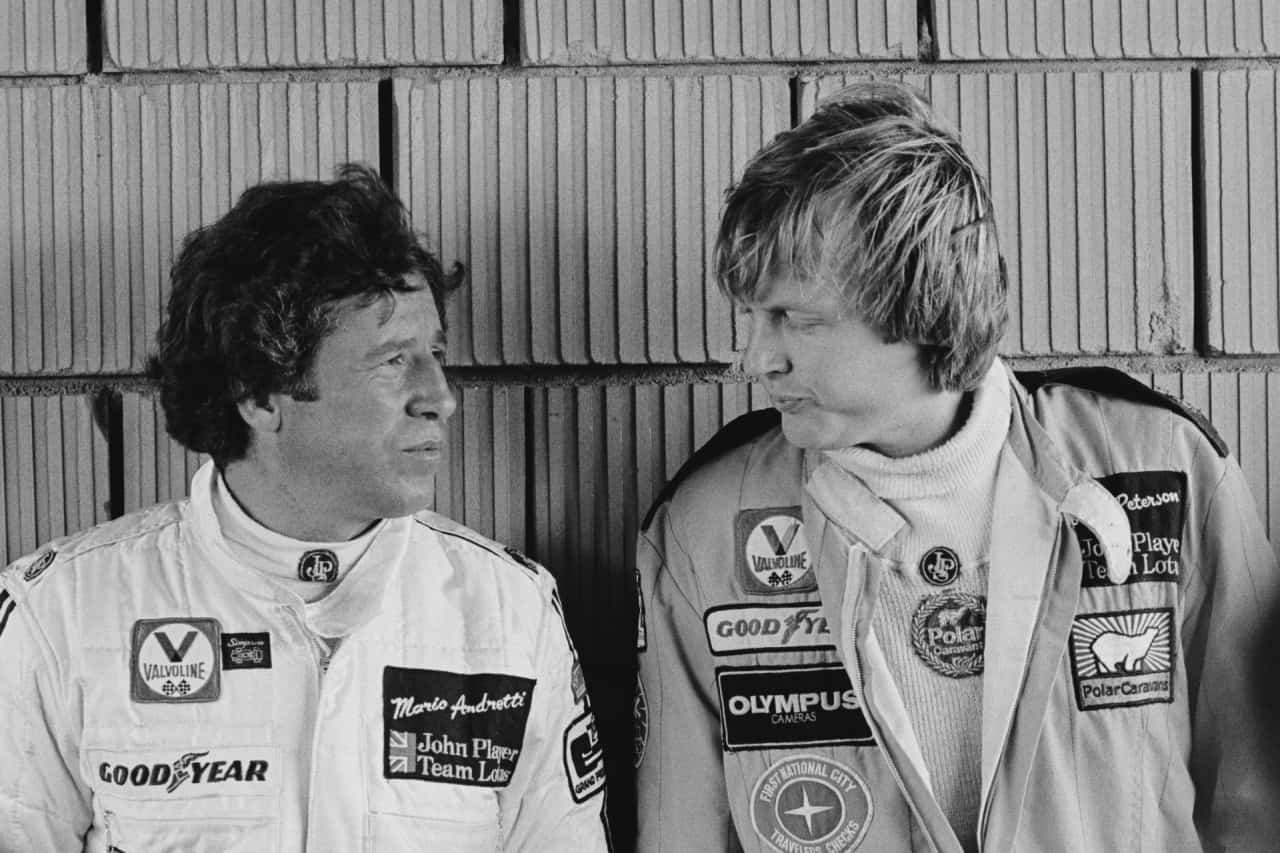
The following morning Andretti got a call from Fittipaldi informing him that Peterson’s condition had worsened and that the injured driver was in critical condition. Still, he was optimistic about his teammate’s chances, but he quickly headed to the hospital to pay him a visit. By the time he arrived, Ronnie Peterson was dead.
“I tell you, that one, I couldn’t accept for a long time,” Mario said later. “I just couldn’t accept it. I thought, what a damn waste.”
The loss was particularly heartfelt because Andretti had grown very close to Peterson and his family.
“Ronnie was one of the best friends I ever had in my life in or out of the car,” he said. “Our families spent time together. I stayed at his house, and he stayed at my house. We played tennis together. We’d water ski. We just enjoyed each other’s company.”
When we think of the celebrations that follow winning a Formula 1 championship these days, it’s easy to get caught up in the delight of the moment. For example, who can forget the warmth of the 1982 champ Keke Rosberg with this son, Nico, after the younger man won the 2016 title?
This era of blessedly safer race cars seems so divorced from what Hill and Andretti went through. Perhaps the sport of Formula 1, which took so many lives over so many years, has finally reached its own age of innocence. That perspective, that sense of sacrifices made, is important to consider as we celebrate America’s two world champions, Phil Hill and Mario Andretti, and what they achieved at Monza — our All-American heroes.
RELATED POSTS // HOME
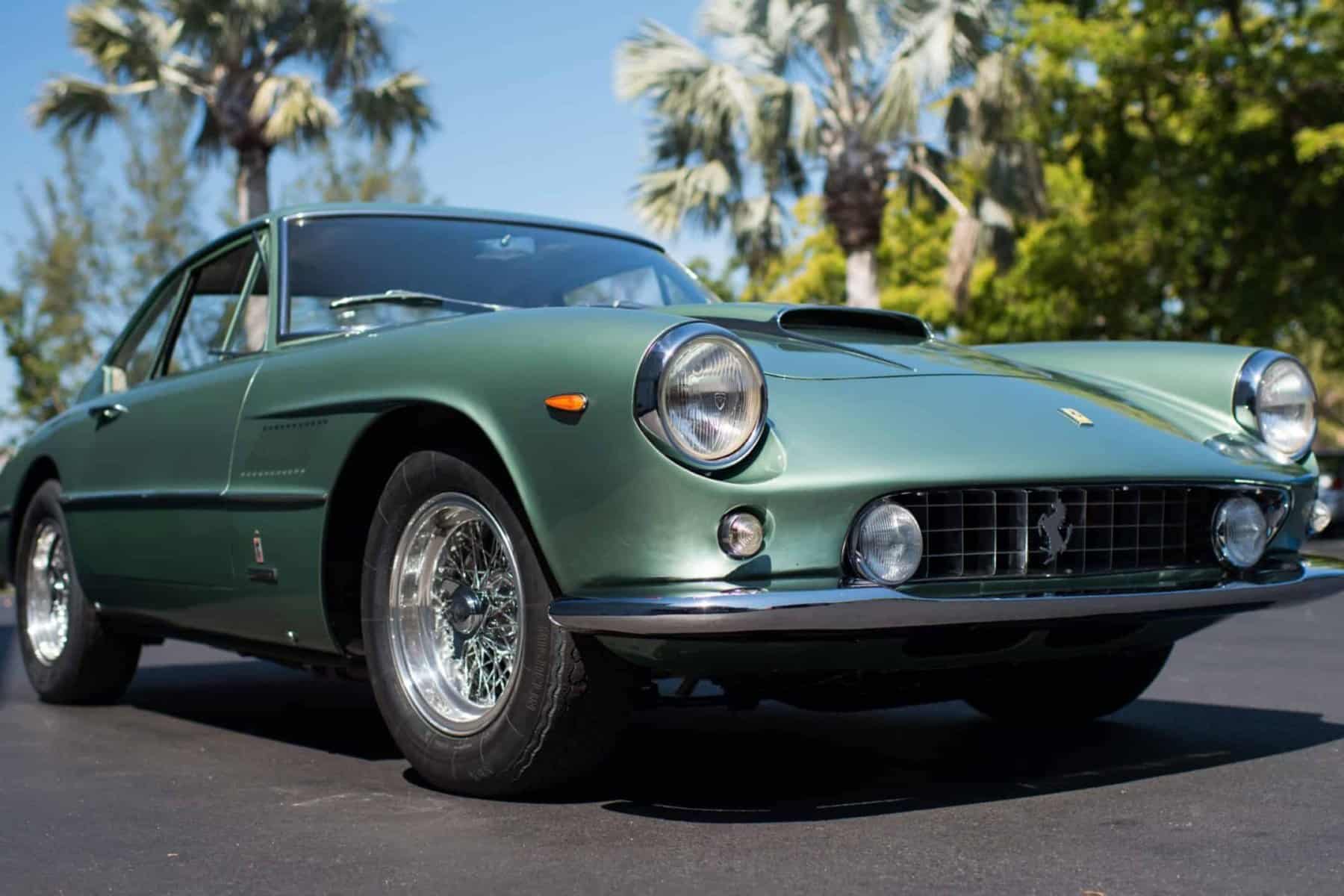
The Boss’s Car: Enzo Ferrari’s Ferrari 400 Superamerica

Ferraris from the Front Office

Morgan’s Handcrafting Factory
Get the inside track newsletter, inspiring stories and market insight on exceptional automobiles – delivered to your inbox weekly..

Christian Jones NFL Draft Overview Position: Offensive Tackle Height: 6'-5" Weight: 306 pounds School: Texas More 2024 NFL Draft Profiles 2024 NFL Draft: […]
Chris Jones is always outspoken and isn’t standing for anyone trying to take away from the Kansas City Chiefs victory in Super Bowl LVIII. Former San […]
The Carolina Panthers had a disappointing rookie class last year. While Bryce Young's struggles were the main highlight, second-round pick Jonathan Mingo had a […]
Marshawn Lloyd is emphatically a running back to keep an eye on in this 2024 dynasty class. The USC alumnus has declared for the 2024 NFL Draft and is expected […]
The NFL Draft is a resource to beef up a franchise with young players hungry to showcase their talent. It is also a resource to get the help that free agency […]
Free agent defensive lineman Calais Campbell has struggled to find a suitor on the open market despite a strong 2023. After signing a one-year deal with the […]
For April 10, 2024, we will look at the clash between the Cleveland Cavaliers and Memphis Grizzlies tonight in Cleveland. Before we get into that featured […]
Milwaukee Bucks superstar Giannis Antetokounmpo will undergo an MRI for a left soleus strain, per ESPN’s Adrian Wojnarowski. Giannis Antetokounmpo Sustains […]
Atlanta Hawks guards Trae Young and Dejounte Murray may be destined for a breakup but it isn’t because of a fractured relationship. This week, the All-Star […]
Following a four-year stint with the Boston Celtics, forward Grant Williams joined the Dallas Mavericks last offseason. Despite a solid start with the team, […]
We have a huge slate of 14 NBA games to look forward to today. I have curated the best NBA bets for April 9 for you to jump on. Relax, enjoy the games, and […]
The writing is on the wall for one of Trae Young or Dejounte Murray, as the Atlanta Hawks still believe their best path forward is with one star lead guard […]
2024 was supposed to be a comeback season for a more determined than ever former National League MVP, Kris Bryant. However, the first 12 games of the regular […]
After blowing three saves in four opportunities, the Pittsburgh Pirates should consider another role for closer David Bednar for now. Bednar, an All-Star in […]
Somehow after only 10 games, the New York Mets pitching staff is stretched thin. The team has already shuffled multiple arms on and off the roster, and it […]
Believe it or not, another high upside starting pitcher is out with an arm injury. On Tuesday, the Washington Nationals announced that Josiah Gray will be […]
A year ago, the Kansas City Royals lost seven of their first 10 games, winning seven of them by the end of April. But now, the Royals have a 6-4 record and are […]
For the second time this week, the Boston Red Sox announced that an important player will miss extended time due to injury. On Tuesday, Boston announced that […]
Welcome back to another day of NHL Predictions. Each day, Last Word on Hockey takes a look at the games that are happening and gives our predictions for each […]
Connor McDavid is currently listed as day-to-day with a lower-body injury, and his status for tonight’s game is uncertain. His Edmonton Oilers are set to […]
With the 2023-2024 season coming to a close, let's cover the Chicago Blackhawks players who have excelled and those who have underperformed this season. The […]
Disappointing news out of New Jersey, as their superstar centre, Jack Hughes, is out for the year with an injury. It was announced earlier today that Hughes […]
It's a good news, bad news day for the Xhekaj family, as Montreal announces that Florian Xhekaj signs. Earlier today his brother, current Canadien, Arber, was […]
The Montreal Canadiens defender Arber Xhekaj will be out for the rest of the season with a left shoulder injury. Today’s announcement is that he will require […]
Arsenal have had a strong start to 2024, currently occupying the top spot in the Premier League table and competing in the quarter-finals of the UEFA Champions […]
On April 10, 2024, we will have a very interesting game between Atlético Madrid and Borussia Dortmund. We will watch the 1st leg of the Champions League […]
Liverpool are determined to give Jurgen Klopp an ideal send-off by winning the Premier League and UEFA Europa League titles at the end of the season before he […]
On April 10, 2024, we will have a very interesting game between PSG and Barcelona. We will watch the 1st leg of the Champions League quarterfinal. Both teams […]
Liverpool are set for a timely squad boost as Alisson Becker, Trent Alexander-Arnold, and Diogo Jota edge closer to making their returns from injury. The Reds […]
Mikel Arteta could have a full squad at his disposal for Arsenal’s upcoming game against Aston Villa. Unlike their title rivals, the Gunners have a clean […]
Two Very Strong Groups Welcome back to our series looking at the 2024 Kentucky Football team. In case you missed them we started off with the quarterbacks. […]
DIdi Florida State got a partial victory in court in Leon County court today, although the bigger decision has been put off for another day. Circuit Court […]
Washington picked up its first two commitments from the class of 2026 recruiting cycle over the past week. It began with the number one player in Oregon, Ansu […]
We continue our Spring coverage of the Mountaineers, by looking in on the West Virginia running backs, who are looking to build on their success from 2023. […]
Clemson finished its 2024 Spring practice schedule last weekend with the Orange vs White game. It was a good showing from both sides as Tiger fans got their […]
Sometimes the more things change, the more they stay the same. As we have noted in recent coverage, there have been significant changes in the way Wake Forest […]
- Pro Wrestling
- Motorsports
Sports. Honestly. Since 2011
1961 italian grand prix: ecstasy and tragedy at monza.
- September 3, 2014
- Daniel Lloyd
The 1961 Italian Grand Prix was supposed to be a celebration. The Tifosi were out in force to welcome home their darling fleet of 156 Ferraris that had affectionately developed the ‘Sharknose’ moniker and dominated much of the season. It was Ferrari’s day. They were almost guaranteed to have a World Driver’s Champion, with the title set to be decided in the penultimate round at Monza.
An Epic Conclusion
Wolfgang von Trips and Phil Hill entered the race just four points apart, with the latter doing the chasing. Both were vying for their maiden world championship trophy, and both had delivered some awe-inspiring drives throughout the season. Hill had finished every race thus far, winning the Belgian Grand Prix, while ‘The Count’ had accumulated four podium finishes in six races, including victories at Zandvoort and Aintree. Ron Walker Racing’s Stirling Moss had an outside chance at winning the title in his privateer Lotus, but two non-finishes in France and Britain had virtually discarded him from the title-race. The formality was that the Scuderia pair would be racing each other for the overall spoils.
Several notable drivers struggled in qualifying, including Hill who ordered his team to perform an overnight replacement of his Ferrari’s 120 degree engine. Jack Brabham and Moss also endured engine trouble, which allowed von Trips to claim his first pole position of the year. Mexican youngster Ricardo Rodriguez started on the outside of the front row; a remarkable feat considering his engine was less powerful than the other the Ferrari cars.
The parkland around the Autodromo Nazionale Monza was engulfed by the fervent atmosphere that only the Italian fans could create. Even in the early ‘60s Monza was considered to be the highlight of the Formula 1 calendar, such was its challenge to the driver. Several segments where competitors would hold the throttle to the floor for around 30 seconds at a time helped to envelop the race in endeavour. It was all about raw speed, and whoever dared to push the barriers of their machinery the farthest.
The Ferraris were specifically geared to generate the highest possible straight-line speed. As such, they were expected to struggle when accelerating away at the start, although once they had reached the oval section of the famous 6 mile course they would be in a league of their own. At least, that was the plan.
A Fated Race Day
Il Tricolore fell and the roar of over 30 finely tuned 1.5 litre Formula 1 cars permeated the cool afternoon air. As predicted, the five works Ferraris were slow off the line, allowing Graham Hill’s BRM, Jim Clark’s Lotus and Jo Bonnier’s ageing Porsche to get within range on the approach to Curva Grande. Von Trips characteristically had a poor start; he often took several laps to acclimatise to the pace.
However, the Sharknoses soon came into their own and Hill took the lead on the first lap, pursued closely by Richie Ginther and Rodriguez. Clark and Graham Hill followed, with von Trips trying to return to head of the field.
On lap two, von Trips had worked his way past Brabham coming out of the first Lesmo and managed to overtake Clark coming out of the next corner. Brabham bit back and scythed past the pair on the approach to Vialone, the site of Alberto Ascari’s fatal crash six years prior. The cars streamed onto the Rettifilo Centro, the straight that leads to the fabled Parabolica. Von Trips was chasing Brabham and Rodriguez, who was in third. Clark was drafting behind von Trips’ Ferrari.
The account of the second lap melee differs from source to source, but the end result was the same.
Von Trips was tagged by Clark on the run up to the Parabolica, sending both cars careering left into the bank that hundreds of spectators were packed behind. The Ferrari was launched into the air, hacking down the helpless by-standers. The championship contender who grew up idolising his pre-war hero Bernd Rosemeyer and spent his childhood watching the Silver Arrows storm to victory at the Nordschleife was flung from his car across the track; his body coming to a rest, lifeless.
At the front of the field, Hill ploughed on with Ginther in hot pursuit. They were oblivious to the commotion, although they could see the debris as they approached the Parabolica on each lap. If Hill had been told, he would have stopped his car. Hill and von Trips had become friends over the course of the season, although both accepted that a close relationship in such a dangerous environment was dangerous in itself (they were fully aware of the tragic end to the ‘mon amie mates’, Mike Hawthorn and Peter Collins). Hill was a reserved character who drove hard but was more than conscious of the risk he was undertaking. Von Trips led a more lavish life, but was also afraid of death. All drivers were, but it was part and parcel of the sport in that era.
Hill’s Forgotten Win
Hill went on to produce one of the drives of his life, winning the race and the championship, the first time an American had done so. But his victory was short lived. After receiving his trophy and champagne the new champion was addressed by Ferrari’s Carlo Chiti. The defining moment of his life had been shrouded by tragedy and a sense of guilt. He remained stoic upon the realisation of von Trips’ death, but would never be the same.
The 1961 Italian Grand Prix marked one of Formula 1’s most heart-wrenching weekends. While sources contest that the fatality rate was either fourteen or fifteen, it remains as one of the worst crashes the sport has ever seen. While we are thankful of the safety measures that currently protect our current crop of drivers, there is always a stark reminder that the glamorous world of Formula 1 has a dark and tragic past.
The 1961 race at Monza claimed the life of one of the sport’s finest stars, and still stands as one of the darkest days in Formula 1 history.
Thank you for reading. Please take a moment to follow me on Twitter – @LWOSDanLloyd . Support LWOS by following us on Twitter – @LastWordOnSport and @LWOSworld – and “liking” our Facebook page .
For the latest in sports injury news, check out our friends at Sports Injury Alert .
Main image:

Duke vs. James Madison Betting Promos & Best Bets
Duke, the No. 4 seed from the South Region, will try to reach the Sweet 16 for the first time in the Jon Scheyer era

Who to Watch For at 2024 Cheltenham Festival Races
Cheltenham Festival is a four-day racing event held in March every year and is seen as the premier jumps racing meet in the UK. The
North Carolina Sports Betting Promos: $11K+ Bonuses Expire Monday
It’s time to embrace the start of North Carolina sports betting! Pre-registration is open for bettors interested in getting top early sign-up offers across the

Day of Reckoning News, Rumors, and What to Expect
The world of heavyweight boxing is set to land in Riyadh, Saudi Arabia, on December 23, as former champions Anthony Joshua and Deontay Wilder headline a thrilling ‘Day of Reckoning’ fight card.
Send Us A Message

clock This article was published more than 12 years ago
‘The Limit: Life and Death on the 1961 Grand Prix Circuit,’ by Michael Cannell
With death and glamour sitting side by side in Grand Prix racing during the 1950s and ’60s, it’s not surprising that the sport attracted young men from noble European families. They saw risking their lives behind the wheel as a way to become modern-day knights. Count Wolfgang von Trips, the last of a 700-year-old noble line and so reckless that he was dubbed Count Crash, was one of these knights of the racetrack. He drove to win glory and help restore Germany’s battered pride.
Noting that the essence of any great sports story is the "pairing of opposites," Michael Cannell , a former editor at the New York Times, has chosen to pair the fearless count with a cautious Californian named Phil Hill. Uncharacteristically for an elite driver, Hill fretted publicly about safety, leading the English driver Mike Hawthorn to nickname him "Auntie." Despite their different personalities, von Trips and Hill were friends before the 1961 Grand Prix drove them apart.
Although that competition supplies a plot line, " The Limit " is really about men who loved speed and were willing to die for it. The book depicts Grand Prix racing in an era before sponsorship deals, when drivers attained great speed without seat belts or fireproof clothing and knew "odds grimmer than those their older brothers had faced in the war."
Nobody personified this mystique better than Alfonso de Portago , the 17th Marquis de Portago, whom Hill regarded as "a Spanish James Dean without some of the brooding." When Portago died driving Italy's Mille Miglia in 1957 — at age 28 — in a horrific crash that sliced his body in two and claimed the lives of nine spectators, pictures of the actress Linda Christian giving Portago a final kiss at his last checkpoint made front pages around the world.Portago had spent most of his last day on Earth philosophizing with von Trips about racing. The two noblemen agreed that it was "beautiful and necessary."
Racing was necessary, too, for Hill, who grew up the son of two abusive alcoholics in Santa Monica. Hill found refuge in tinkering with engines, starting with his aunt’s Pierce-Arrow. Unlike von Trips, who knew nothing about engines, Hill had the heart of a mechanic, having spent a year working in English auto plants.
Von Trips’s aristocratic family lost almost everything in the war, and as a young man he frequently had to borrow money from his friends. Hill tended to be solitary, while von Trips was a ladies’ man who had a lengthy affair with Princess Maria Gabriella of Savoy, the daughter of Italy’s last king.Hill visited the moated von Trips castle and bonded with the count’s mother over a shared interest in classical music. Both von Trips and Hill were on Enzo Ferrari’s team, and Ferrari notoriously goaded his drivers into bitter — and sometimes fatal — rivalries.
Throughout the summer of 1961, von Trips and Hill had “traded checkered flags” on the Grand Prix circuit. Both desperately wanted to be first at Monza, the Italian race that closed out the European phase of the Grand Prix. Hill won, but his victory was eclipsed by von Trips’s death after he lost control of his car that day. Feeling guilty to be alive while his friend and rival had perished in the competition, Hill was a pallbearer at von Trips’s “Gothic death pageant” of a funeral.
Hill’s concern for safety paid off: He retired to California, where he found the contentment that had long eluded him in a late-in-life marriage. He died in 2008. Although there were times when I wished for a bit more panache in the writing, this book is so thoroughly absorbing that I’d recommend it even to readers who don’t have a driver’s license.
Hays is the author of " The Fortune Hunters : Dazzling Women and the Men They Married."
Life and Death on the 1961 Grand Prix Circuit
By Michael Cannell
Twelve. 318 pp. $25.99
We are a participant in the Amazon Services LLC Associates Program, an affiliate advertising program designed to provide a means for us to earn fees by linking to Amazon.com and affiliated sites.

Formula One Art & Genius
The site for f1 aficionados.

von Trips—Monza 1961
Posted on 9 June 2013 29 March 2015 Author Glenn Leave a comment

The 1961 death of German driver Wolfgang von Trips , known as “Taffy,” really illustrates the dramatic change in values in Formula One racing over the decades.
Leading the World Championship (a third place would have been sufficient for the title) for Ferrari, von Trips tangled with then Lotus rookie Jim Clark in the Italian GP at Monza , vaulted over a dirt bern into the air and the crowd (before catch fences and retaining walls) and landed upside down in the middle of the track. In those days, with spectators mangled and the driver’s lifeless body being carried across the circuit, the race went on despite the gruesome accident, as it had always done. No safety, no red flag, no medical crew.
Clark put it behind him to win two Grand Prix championships, narrowly lose two more, conquer the American Indy 500 for the first time in a rear-engine car, and the perish himself at an inconsequential F2 race at a newly opened, rainy Hockenheim circuit, ironically in Germany.
And yet, reporting the Monza race, the correspondent of Motor Sport magazine would not mention the tragedy until two thirds of the way through his long article, after the usual meticulous description of the latest modifications to the competing cars. “For those in the grandstands and pits and around the rest of the circuit the race went on,” he remarked, “details of the accident being unknown and unannounced by the organisers.” A victory for Von Trips would have given him the world championship. Instead the race and the title were taken by his team-mate, Phil Hill, a sensitive man who, unlike Mike Hawthorn at Le Mans six years earlier, found it hard to celebrate his good fortune.
When motor racing was a matter of life and death | Richard Williams | The Guardian
How different things are today.
Leave a Reply Cancel reply
This site uses Akismet to reduce spam. Learn how your comment data is processed .
- Classic Galleries
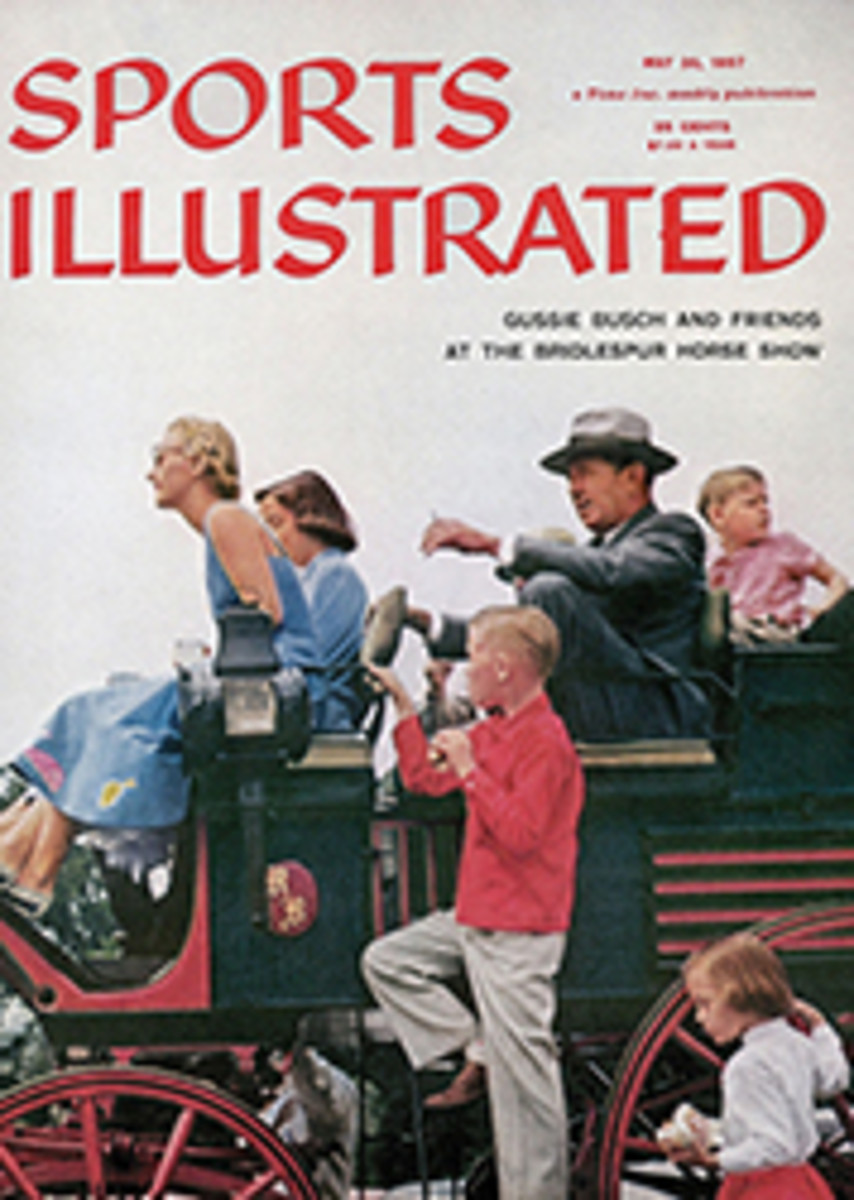
HORROR IN ITALY
- Author: William Rospigliosi

TABLE OF CONTENTS
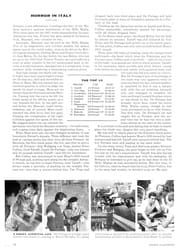
ORIGINAL LAYOUT
A swarm of festive Italians bracketed the checkered finish line at Brescia, waiting. The scent of lime blossoms filled the air. Clusters of the white flowers whirled down from green foliage, to be flattened against scorching asphalt as car after car completed the tortuous thousand miles of open road of Italy's Mille Miglia.
The Italians were jubilant that their compatriot, 50-year-old Piero Taruffi had won the race, coming out of semiretirement at the 11th hour to fill out Enzo Ferrari's short-handed team. It was a triumph of unusual sweetness for the silver-haired Taruffi, the "old fox," who knew the Italian mountain roads better than any man but had raced in the Mille Miglia without success so many times before.
The crowd cheered Taruffi, who averaged 94.78 mph in his experimental 4.2-liter Ferrari, and the German, Count Wolfgang von Trips, who arrived in second place in a 3.8-liter Ferrari, and the Belgian, Olivier Gendebien, who was a brilliant third in a 3-liter Ferrari touring coupé. And they waited for the popular young driver, 28-year-old Alfonso de Portago, to complete a winning Ferrari foursome.
They liked his good looks, his shiny mop of curly black hair, his devil-may-care attitude about many sports. They called him uno simpaticone. They were with him. The loudspeakers said he had passed Mantua, passed Goito and was on the straight stretch between Goito and Guidizzolo. The people waited, and he did not appear.
De Portago had driven a hard race. He would not have driven at all, for it is a race much hated by most of the drivers, but young Cesare Perdisa gave up racing after the recent death of the Italian champion, Eugenio Castellotti, and De Portago, as a member of the Ferrari team, was asked to take Perdisa's 3.8 Ferrari. Reluctantly, with a premonition of disaster that he communicated to a few friends, he did. Even after Perdisa's withdrawal (to become a horseman), De Portago might have bypassed the race. The talented Luigi Musso might have taken the car, but he became sick.
Handicapped by lack of experience in the thousands of turns of Italy's narrow, sinuous roads, De Portago drove harder than most, attempting to win by sheer virtuosity. He had only 30 miles to go—a few minutes left to drive—when it happened. The narrow bridge of Goito was behind him, the tormenting twists of the Apennines forgotten, and the inviting tape of the road through the Po Valley lay before him.
The spectators who lined the road saw him coming—first a dot in the distance, looming larger every second. He must have been going 150 mph. Children tried to force themselves past the legs of their elders, up to the front of the crowd. There was a sudden report, followed by a hiss—a tire blowing out—and the dot that was De Portago, a red Ferrari by now, swerved violently. Its tail hit the bank at the left of the road. Then the car catapulted above the first line of onlookers, cut the telegraph wires above, and landed among the more timorous spectators who had stayed back for greater safety. Amid the shrieks of the injured and dying, De Portago died immediately, and with him his old friend, the 40-year-old American Edmund Nelson, who had come along for the ride.
A FRIEND NAMED NELSON
Nelson, a picaresque character like De Portago, had ridden with the Spaniard before—a victorious ride in last year's Tour de France for automobiles. De Portago first met him in 1945, when a bearded Nelson had come out of the Merchant Marine to take a job at Manhattan's Hotel Plaza. The young De Portago dressed in the latest Savile Row styles, sported a gold cigaret holder, smoked Oriental cigarets and spoke with a pronounced English accent. While living at the Plaza he became fast friends with the older Nelson. He copied Nelson's more casual dress, lost his Briticisms and even learned how to box from Nelson, who had been a light-heavyweight fighter. It was Nelson who taught the marquis how to bobsled.
Nine spectators were killed with Nelson and De Portago, 20 others injured. The deaths of a Dutch amateur driver, Josef Gottgens, who crashed a Triumph TR 3 into a wall at Florence, and a motorcycle policeman brought the toll to 13.
It was the worst composite disaster in the turbulent history of the Mille Miglia, the worst in racing since the Le Mans tragedy in 1955. It may well mean the end of the Mille Miglia as a road race. Only with great difficulty had the Mille Miglia organizers overcome a governmental objection to its being run this year after six persons died in last year's race. It is becoming increasingly evident that speeds are too high and roads too narrow for today's cars. Other accidents, besides De Portago's and that of Gottgens were only narrowly avoided. Said the world champion driver, Juan Manuel Fangio, after the race (in which he did not compete):
"I shall never run in the Mille Miglia in the future because it is a race that is really too dangerous. I have tried it five times, and I have always seen that the risk is too great."
Racing tends to survive its disasters, however, and the Mille Miglia must be recorded as a triumphant event for Enzo Ferrari's machines, in spite of the overshadowing tragedy. Eight of the first 10 places over-all were won by Ferraris, a new affirmation, if perhaps the last, of the Modena factory's postwar domination of the Mille Miglia. With three races for the 1957 world championship for manufacturers now run, Ferrari has gone ahead of its keenest rival, Maserati, two victories to one.
Ironically, Maserati was favored in the Mille Miglia. Two of its magnificent new 4.5-liter models, the fastest sports cars in the world today, were to be driven by Britain's great champion, Stirling Moss, and France's best driver, Jean Behra. On the day before the race Behra, who lost an ear in the 1955 Irish Tourist Trophy race and suffered a score of other injuries in his yet unsuccessful push to become a world champion, damaged one 4.5 irreparably in an accident while completing a painstaking training grind.
And high though the death toll was, it might have been much higher except for the bravery, skill and incredible reflexes of Moss. Having started last, an excellent position in which to judge the speeds he must average, Moss got no farther than the first bend outside Brescia. Coming into the curve he felt the brake pedal of his 400-hp mount give way beneath his foot. In the split second before the Maserati could hurtle, brakeless, out of control, Moss coolly jammed the shift lever into low gear, bringing the compression of his eight cylinders against the speed of the car. He stopped before the car reached the spectators who lined the Rezzato cemetery—its walls white and cypress trees dark against the brightening dawn.
When Moss went out, the race changed its nature. It was henceforth Ferrari's domain. Three different cars took the lead at various points but they were all three Ferraris. At Ravenna, the first check point, the five cars first to arrive were all Ferraris—first Wolfgang von Trips, second Peter Collins, third Taruffi, fourth De Portago—only one minute and 35 seconds behind Taruffi—and Olivier Gendebien.
But Collins was determined to beat Moss's 1955 record of 98 mph and, pushing hard along the flat straight Adriatic stretch, he was first to reach Pescara, with Taruffi—who always made a specialty of pushing on the straight Pescara run—less than a minute behind him. Von Trips had dropped back into third place and De Portago still held his fourth place in front of Gendebien among the five Ferraris in the lead.
Climbing up the Apennines across to Aquila and Rome, Collins masterfully, relentlessly pushed his advantage, while all others dropped back.
At the Rome check point, the blond Briton led the field by almost six minutes. Taruffi was still followed by Von Trips, and De Portago held grimly on to his fourth place. At that point, Collins was only nine seconds behind Moss's 1955 record.
Then, after 550 miles of running, came the hairpin bend northward—the bend which joins the Flaminian and the Cassian ways. Collins took it perfectly—right in the center of the road—in a smooth arc with no wheel screech. Taruffi, in his customary black overalls and silver helmet, swung wide before the bend and, calmly with upraised head, took the road that led him north to victory. But De Portago's lack of knowledge of the route was very apparent when he took the bend too fast, seemed suddenly surprised to find it was a hairpin and, with the car straining outward, only just managed to complete the turn northward toward the place where he was about to die. De Portago had actually never been round the entire Mille Miglia course, though he had twice attempted to do so with Nelson. The first time, De Portago's car had caught fire at Ferrara, and the second time out he had run into a milestone almost at the start of the course.
It is a tribute to his skill and daring that he kept to fourth place the whole way, despite this very grave handicap.
He was still in fourth place at the Florence check point. At Florence, Collins had beaten Moss's 1955 record by four minutes and had left Taruffi nine minutes behind him. The five Ferraris were still leading in the same order.
Up the steep twisty Futa and Raticosa passes, between Florence and Bologna, the pace began to tell, not on Collins but on his car's transmission. Taruffi was also having trouble with his transmission and with his springing. At Bologna he intended to give up, as he had done in the 12 Mille Miglias he had attempted before. But this time, in his 13th try, when he heard that his rival, Peter Collins, was in the same bad trouble, he decided to go on. He said:
"I had intended to give up because the car didn't seem very safe to me, in its crippled condition. But I had promised my wife that I would give up racing if I won a Mille Miglia. So I took a chance." Taruffi's faith in himself became justified when at Parma, Collins—as unlucky in his way as his countryman Moss—had to retire with a broken half-axle.
Taruffi continued on his way—not pressing too hard—careful to avoid gearshifts that would add to strain on his damaged transmission. Von Trips behind him was almost wheel to wheel, but the old fox was never one to be ruffled. Von Trips had started from Brescia three minutes ahead of him, so, as long as Von Trips kept wheel to wheel, Taruffi had a three-minutes lead.
But the two cars, racing in to the jammed finish line, side by side, made a grand ending to what, in all probability, will be the last of all Mille Miglias. (Gendebien—in third place—had arrived earlier.) Reports were circulating even then that the dashing De Portago had interrupted his rush toward Brescia, near Rome, upon seeing his frequent companion of late, the movie actress Linda Christian. He had stopped his car, it was said, waited for the actress to sprint to him, then had lifted her up and kissed her before roaring onward. It was with exhilaration that the last crowd on the finish line of the last Mille Miglia and of Taruffi's last race, waited eagerly for De Portago. But "Il Simpaticone," the fourth man, had been stopped by death at Guidizzolo.
can stay alive and in one piece for the first couple of years this is half the battle.
•The mere fact that we race requires no courage on our part.... We get terrified.... I think what frightens me most is that when I have actually lost control of the car there is absolutely nothing I can do except sit still, frozen with fear, and wait for events to take their natural course.
•Racing is a vice, and as such extremely hard to give up. All drivers swear that they will stop at such and such an age, but very few of them are able to do so.
•It is the uncertainty of the future that attracts the adventurer most. Few professions...have less security and more uncertainty about the future than motor racing. One can be on top one second, but all it requires is a very small error and one is very embarrassingly dead the next.
This prophetic and dramatic testimony came from the pen of 28-year-old Don Alfonso Cabeza de Vaca y Leighton, the 17th Marquis de Portago (shown above), and first appeared in SPORTS ILLUSTRATED last week just four days before his tragic death at Guidizzolo.
"Fon" de Portago seemed to have been carefully bred for glamour. From his father, who had been a movie actor, a great athlete and sportsman, a fabulous gambler and a fearless warrior for Franco during the Spanish Civil War, he inherited a cloak of romance dating back to the 16th century. One of his earliest ancestors had walked all the way from Florida to Mexico City as part of a Spanish treasure-hunting expedition in 1528.
From Fon's mother came the kind of American dollars needed to finance his restless life. She is the former Olga Leighton, a British girl who first married a Chicago financier named Mackey and through him accumulated a fortune from Household Finance Corporation.
Young Fon grew up in the elegant idleness of international society. His schooling—mostly by tutors except for a month at The Lawrenceville School in New Jersey in 1944—was casual. He was a foppishly dressed youth of 16 living at Manhattan's Plaza Hotel with his mother when he first burst into café society. By 1947 he had attracted headlines flying an airplane under a bridge in London to win a $500 bet. Soon he was a familiar figure on the steeplechase courses and polo fields of Europe. He was an accomplished bobsledder, swimmer and jai alai player—a superb athlete.
Logically enough, auto racing became Fon's greatest passion. He started with midget cars in France, quickly graduated to a 2-liter Maserati, which he first raced at Le Mans in 1954. He drove with far more verve than finesse, had far more than his share of accidents, and his wrinkled cars were his racing trademark. Yet he won his share of races, including the 1956 Tour de France for automobiles.
Surviving Fon de Portago are his pretty blonde wife, the former fashion model Carol McDaniel, and their two children—Andrea, 6, and Antonio, 3. Fon first met Carol in a nightclub and within two hours he told her he intended to marry her. When Fon made up his mind to do something he did it with a flourish. That is the way everyone remembers him.
- · Formula 1
- · Formula 2
- · Formula 3
- · Formula E
- · News archive
- Lewis Hamilton
- · Charles Leclerc
- · Daniel Ricciardo
- · George Russell
- · Lewis Hamilton
- · Max Verstappen
- · Sebastian Vettel
- · All drivers
- · Test sessions
- F1 Season 2024
- F1 Standings 2024
History: Ferrari and the Great Walkout of 1961
- Published on 16 Dec 2015 19:31

- By: Rob Veenstra
By: Bas Naafs
Ferrari 's history is a mix of spectacular highs, dark lows and controversies that fit in between the two. Ferrari's controversies are everything but boring though. Whoever reads a book about the life of Enzo Ferrari can't deny that it would do just right as a Hollywood script. Therefor it is about time that we pop open the Pinot Grigio, turn on Nino Rota's soundtrack of The Godfather, and seat ourselves in a comfy chair to read a story in which all the elements of an excellent Italian opera are present. It is about love, women, betrayal, comradery, and Ferrari's. Lots of Ferrari's. This week we'll be looking at Ferrari's Great Walkout of 1961 that saw Enzo's most profound engineers, like technical director Carlo Chiti and head of design Giotto Bizzarrini, leave Ferrari after a dispute regarding the unwelcome presence of Enzo's wife, Laura. The ever growing aggravation among his top engineers resulted in a dispute between them and Enzo which started to come to the fore in the late 1950's. However, in a short burst of optimism, the Ferrari employees forgot that one does not simply present an ultimatum to Il Commendatore. Still applied today: if you don't agree with how things are being run at Ferrari, you may take your services and get out. The same message that Ferruccio Lamborghini and the staff of the Ford Motor Company were faced with.
Misses Ferrari
Laura Dominica Garello (1923-1978) was Enzo's wife and mother of Dino Ferrari. Dino tragically died in 1956. His death was huge blow to Enzo, and slowly but surely he started to isolate himself from the factory and the Scuderia. While he locked himself up in his office at Modena, Laura started to patrol the premises of the factory and involved herself more and more in the general management of the Scuderia. It might well be that the death of Dino and Enzo's alleged love affair with another women made her a bit more like Enzo himself: a tyrannical figure. Sales manager Girolamo Gardini was Lauro’s most picked on target, and he had to endure many verbal violence. Gardini got fed up with these never ending discussions and, in 1961, turned to Enzo with an ultimatum: either Laura backs off from terrorizing the production team, or Gardini would leave the company. Unsurprisingly, Gardini had to pack his bags and leave the factory through the backdoor to go find himself a new employer. However, Il Commendatore did not expect Gardini's firing to create a huge backlash. After hearing the news, Chiti, Bizzarrini, Scuderia Ferrari team manager Tavoni, and five others called in the help of a lawyer with whom they formulated a letter in which they opposed Enzo's decision to fire Gardini. This was a remarkable situation because no one dared to oppose Enzo like that before, hence the name 'The Great Walkout'. Eight of the most influential engineers who made Ferrari the team to beat on the racetracks in both Formula One and GT-racing, took to the streets against Enzo’s tyrannical behavior. This came at a critical point in Ferrari’s history as they were about to get a heavy beating by Ford, Lotus , Jaguar and Shelby. Some predicted the end of the Scuderia.
Saturn devours his sons
Between the late 1950's and up until the end of the 1960's, Enzo Ferrari lost as many as seven drivers, driving his cars. In the Vatican newspaper, Enzo Ferrari was more than once compared to the Italian god Saturn, who devoured his own sons to keep his position as mighty god unchallenged. This Roman myth was depicted in a quite gruesome painting by the Spanish painter Francisco Goya between 1819 and 1823. I suggest you to look it up after dinner time. Alberto Ascari died during a test session on the circuit of Monza. Allfonso de Portage died in the tragic crash of the 1957 Mile Miglia in which his co-driver and ten bystanders also lost their lives. In 1958 Luigi Musso died on the circuit of Reims while, in the same year, Peter Collins lost his life in a crash on the Nürburgring. Wolfgang von Trips ’ fatal crash at Monza, 1961 was the most deadly of Formula One crashes, as he took fifteen bystanders with him. Six year later, Lorenzo Bandini had his fatal crash in the streets of Monte Carlo. Fatal accidents were by no means a rare occurrence; it was simply part of being a race driver in that era. However, the large amount of fatalities under Enzo's watch were simply too high for people to let go unnoticed, and Enzo ended up with this image of him walking over the bodies of his own people in search of success. Working against him was the Italian law. Every fatal accident in a race event on Italian grounds is to be legally treated as a murder case. The constructor of the car involved in the crash is, when proven, to be accused of murder. The loss of his 'sons' weakened the position of Il Commendatore and his company.
Automobili Turismo e Sport
Tavoni's Formula One team was going to drive under the name ATS (Automobili Turismo e Sport), which was going to be sponsored by a very wealthy Venetian aristocrat. Count Giovanni Volpi still believed that he could bring Venice back to its former position as one of the most powerful trade cities of the 16th and 17th century. In the early 1960's, Volpi started his own racing team, Scuderia Serenissima. His father, count Guiseppe Volpi di Misurata (someone who did many, many things. One of them was creating the Venice Film Festival), left his son a fortune to inherit. Giovanni loved motor racing and became a regular costumer for Enzo Ferrari's products. Among many other, Giovanni owned the iconic 250 GTO SWB ‘breadvan’. Because of the Great Walkout, Volpi took his chance to bring a group of talented engineers to his own Scuderia Serennisima by sponsoring Chiti, Tavoni and Bizzarini in creating ATS. ATS started work on three projects: an F1-car, a GT-prototype and a regular road going GT. Chiti and Tavoni made their debut with their V8 powered ATS-100 at the Dutch Grand Prix of 1963. The car was hideous. The nose was extremely low and small while the higher mounted engine was covered with pieces of the tubular chassis and some bodywork. The tubular frame was fabricated without much thought behind it. After installing the engine, more tubes were to be added which made it impossible to change the engine or gearbox without having to cut through the chassis! Phill Hill and Giancarlo Baghetti drove their ATS’s without any success. In Italy they realized an 11th and a 15th place, but failed to bring the car home in Belgium, Holland, Mexico and the U.S. They pulled out the plug after this hugely disappointing season, never to be seen again.
Ferrari survived the revolution. Enzo hired, together with a couple of others, Mauro Forghieri and Sergio Scaglietti. Scaglietti finished the 250 GTO and designed beautiful Ferrari body's for years to come. Forghieri became Ferrari's technical director and led the development of the 312 series that became highly successful in the GT- and prototype- endurance racing, while its F1 cousin –the 158- won the world championship in 1964 with John Surtees behind the wheel. During his active years at Ferrari, Forghieri took eight constructers titles. Enzo Ferrari did not succumb to the challenges with which he was faced in the early 1960’s. He went through a lot, but never cracked.
Replies (0)
Grand prix of belgium.
Local time
Free practice 1
11:00 - 12:30
1:44.493
Free practice 3
12:00 - 13:00
L. Hamilton
1:43.255
Race / Startgrid
15:10 - 17:10
no time
Free practice 2
15:00 - 16:30
M. Verstappen
1:43.744
15:00 - 16:00
1:41.252
Fastest lap
D. ricciardo.
1:47.483
World Championship standings 2024
- Standings drivers
- Standings team
Test calendar
Related news

Can Racing Go Mainstream In The US?
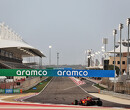
LIVE Updates: Follow the third day of the F1 Pre-season test in Bahrain
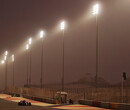
LIVE Updates: Follow the second day of the F1 Pre-season test in Bahrain

LIVE Updates: Follow the first day of the F1 Pre-season test in Bahrain
Give your opinion, will bottas challenge hamilton for the world championship in 2020.
- Absolutely!
- No - Hamilton has the measure of him
- Too early to tell
Formula 1 Calendar - 2024
Team profile.

- Team name Ferrari
- Base Maranello, Italy
- Kimi Räikkönen 1
- Michael Schumacher 1
- Felipe Massa 2
- Fernando Alonso 3
- Felipe Massa 3
- Michael Schumacher 3
- Felipe Massa 4
- Kimi Räikkönen 4
- Sebastian Vettel 5
- Fernando Alonso 5
- Felipe Massa 5
- Michael Schumacher 5
- Felipe Massa 6
- Kimi Räikkönen 6
- Kimi Räikkönen 7
- Felipe Massa 7
- Fernando Alonso 8
- Fernando Alonso 14
- Charles Leclerc 16
- Gerhard Berger 28
- Carlos Sainz jr 55
Would you like to stay up to date with the latest Lewis Hamilton and Formula 1 news from GPtoday? Activate free push notifications and be the first to know!
- Share full article
Advertisement
Supported by
Special Report: Italian Grand Prix
Auto Racing Is Still Cruel After All These Years

By Brad Spurgeon
- Sept. 3, 2015
Probably no one has found a better three-word definition of auto racing than Robert Daley, whose 1963 book about Formula One was called “ The Cruel Sport .” Daley, who wrote about Formula One for The New York Times in the 1950s and early ’60s, took the title from a driver’s comment after a deadly accident.
This year, auto racing has again been reminded of its cruel nature by the deaths of two drivers: Justin Wilson , a former Formula One driver who died in August of injuries suffered in an IndyCar accident in the United States, and Jules Bianchi , who died of head injuries in July, nine months after an accident in the Japan Grand Prix. He was the first driver to die in a racing related accident in Formula One since Ayrton Senna in 1994.
But during the period in which Daley covered Formula One for the Times from his base in France, drivers were dying regularly. In his book, Daley recounts a conversation with the German driver Wolfgang von Trips the night before the Italian Grand Prix at Monza in 1961 . Talking about crashes, von Trips said: “It could happen tomorrow. That’s the thing about this business. You never know.”
The 1961 Italian Grand Prix is remembered not only as the race in which the leader of the championship — von Trips — died in a crash, but also the race in which that death handed the race victory and drivers’ title to the victim’s only real challenger, his teammate, Phil Hill .
That made Hill the first, and only, American-born Formula One drivers’ champion. In 1978, Mario Andretti, who was born in Italy, became the second (and only other) American to win the drivers’ title.
Sept. 10, 1961, is also remembered as the day of the worst-ever death toll for spectators at a Formula One race. Fourteen spectators were killed when von Trips’s Ferrari slid off the track and catapulted up the earth embankment, swirling through the air and striking down spectators.
Monza had long been not only the fastest Formula One track, as it still is today, but also one of the most dangerous. In 1960, the British teams protested the danger of the banked corners by refusing to take part. For the 1961 race, some small changes were made to the track and the cars were less powerful, with a new 1.5-liter engine formula, so the British teams returned. But the lethal, 45-degree angle banking in two 180-degree turns remained.
The track layout was a combination of banked curves and the road track. Although the accident was not caused by the banking, 1961 would be the last year that the banking was used for Formula One. It continued to be used occasionally in some other series until 1969.
The British teams might have returned, but the star cars of the weekend were the five Ferraris, with their distinctive shark noses. The Italian race was the seventh of eight races in the 1961 season, and the drivers’ title had come down to an almost certain showdown between von Trips and Hill. Von Trips led the championship with 33 points, ahead of Hill with 29. Stirling Moss, in a Lotus-Climax, was a distant third with 21 points.
Von Trips scored the pole position, while Hill only managed fourth. On the first lap of the race, von Trips dropped down the pack, while Hill moved into the lead, ahead of Richie Ginther and Ricardo Rodriguez in Ferraris, Jim Clark in a Lotus-Climax and Jack Brabham in a Cooper, with von Trips behind them.
On the second lap, von Trips passed Brabham and Clark. But the move slowed him, and Brabham came back to pass both von Trips and Clark. Heading toward what is called the Parabolica corner, von Trips slowed and moved left for the turn as Clark tried to pass him. The Ferrari’s left rear wheel made contact with Clark’s front right wheel.
Von Trips’s Ferrari went slipping off sideways and hit the embankment, at the top of which the public watched from behind a low fence. Von Trips was thrown from the car and killed instantly, but the car spun over the crowd, chopping people down.
“I honestly don’t think Taffy realized I was there,” Clark said afterward, using von Trips’s nickname. “I am sure that, when he passed me earlier, he had decided his was the faster car and I would be left behind.”
One by one the other Ferraris dropped out of the race with engine problems. That led the way to a victory by Hill, the only Ferrari remaining. Hill did not know that his teammate and friend had died, although when he saw the subdued way in which his team greeted him after the race, he understood . The podium procedure was done without exuberance.
In an interview at Monza in 2002, Hill objected to a report on his title victory that had been published in 1961 in the New York Herald Tribune’s Paris edition. He was quoted as saying that von Trips “deserved” the title and was “morally the winner” of the title.
“That journalist made up that quote,” Hill said. “I would never have said anything like that. I was very upset about von Trips. But I won the title; I deserved it and wanted it. And that’s motor racing. What a load of nonsense! I would never have said he was the moral winner!”
A cruel sport indeed.
- International edition
- Australia edition
- Europe edition
Mistress of the maestro of Maranello

W hat Fiamma Breschi liked best about Enzo Ferrari , apart from the hundreds of letters he wrote, in his famous violet ink, professing his love for her, was his absolute dedication to the job of building the racing cars that bore his name. "He was a constant presence at the factory," she remembers. "He would be there on Saturdays and Sundays, over Easter and Christmas. He never betrayed his cars. Other things, perhaps . . ."
Plenty of people knew Enzo Ferrari from one perspective or another, some of them less than entirely flattering, but few saw him from as many angles as Signora Breschi. At first she was the young mistress of one of his top drivers, Luigi Musso. After Musso's death, in the 1958 French grand prix, she became one of Ferrari's own women. And finally, until Ferrari himself died in 1988, she acted as his spy, one of a network of people whose intelligence-gathering allowed him to control the little empire that became the most powerful legend in motor racing.
Next Monday morning, several hundred people will be drawn by that legend to the Ferrari factory at Maranello, where they will witness the unveiling of the F2004, the car intended to carry Michael Schumacher to his seventh world championship. Enzo Ferrari was the first constructor to make the launch of his new car an annual event; still the faithful flock to pay homage to the legacy of an enigmatic figure who so hated leaving his home town that he persuaded the world to come to him.
Musso, a handsome young Roman, was one of the drivers whose deaths long ago helped create the Ferrari myth. Others included Peter Collins, Count Wolfgang von Trips, Lorenzo Bandini, Gilles Villeneuve and the Marquis de Portago, whose crash in the 1957 Mille Miglia sports car race took a group of spectators with him and created a scandal that almost put an end to the whole of motor racing.
From being the most hazardous sport on earth, formula one has become one of the safest: only one driver, Ayrton Senna, has been killed in a grand prix in the past 20 years. But the memory of those young men falling like autumn leaves remains to give the sport its enduring image of dark glamour, with Ferrari at the centre.
Fiamma Breschi, a native of Florence, was still a star-struck teenager when she met Musso in 1952. Within a short time he had left his wife and two children, and she was with him when he died at the Rheims circuit, dicing with his team-mate Mike Hawthorn. Now, at 69, living in her apartment near the centre of Florence, with Musso's yellow helmet among her souvenirs, she is among those heard in a television documentary titled The Secret Life of Enzo Ferrari, to be shown tonight.
She remembers the feud between Musso and his two English team-mates, Collins and Hawthorn. "The Englishmen had an agreement," she says. "Whichever of them won, they would share the winnings equally. It was the two of them against Luigi, who was not part of the agreement. Strength comes in numbers, and they were united against him. This antagonism was actually favourable rather than damaging to Ferrari. The faster the drivers went, the more likely it was that a Ferrari would win."
If Ferrari knew about the pact between the Englishmen, he would have relished the intrigue. "Cunning and intelligence were his greatest strengths," Breschi says. "He was incredibly good at choosing the people he worked with - the drivers, the engineers, the rest of the team. And then he would set them off against each other. He would indicate where a problem was, and the engineer who had designed the car would defend himself while the oth ers attacked him. From their discussion, Ferrari would work out the solution. And 99% of the time he was right."
There would often be rumours that one driver was being given better equipment. "They used to say that all the cars were prepared in the same way, and perhaps that was true, but as with cakes, there are those that rise more and those that rise less, and the cake that rises more tends to be given to the most greedy, to the driver who is already ahead. And Fangio, for example, was extremely greedy."
Musso was in debt when he died, and the money for winning the French grand prix, traditionally the biggest prize of the season, was important to him. Running wide on a flat-out curve, his car somersaulted into a field. When Breschi saw him in hospital, and felt him respond as she stroked his hand, she was told that there was hope. Later, back in their hotel room, the team manager arrived to tell her he was dead.
"I ran for the window, which was open because it was July and very hot. I tried to throw myself out. I was already halfway out when Beba, Fangio's girlfriend, and Lulu Trintignant, Maurice's wife, grabbed me and pulled me back. They didn't leave me alone that night or the next day."
By the end of that year Collins and Hawthorn were also dead, and Breschi could not suppress a feeling of release. "I had hated them both," she said, "first because I was aware of certain facts that were not right, and also because when I came out of the hospital and went back to the hotel, I found them in the square outside the hotel, laughing and playing a game of football with an empty beer-can. So when they died, too, it was liberating for me. Otherwise I would have had unpleasant feelings towards them for ever. This way I could find a sense of peace."
But not for long. A few months later she was in Rome, trying to forget her tragedy, when she received the first letter from Ferrari. "He said I would always have friends at Maranello and that I could go back whenever I wanted. So when I recovered, I went to see him."
Ferrari turned out to have two or three other things on his mind. First, he asked her for a woman's opinion on his road cars. "He had found that a number of women were jealous of their husbands' Ferraris. He thought it would be better if they started to like their husbands' cars. I reported all the faults that might annoy a passenger. All sorts of things. I managed to improve Ferrari cars despite not being an engineer."
He also started to send her to the races, using her as an extra pair of eyes and ears. "I always had to know what was going on. Then I'd go back to Modena and report it to him in person. Sometimes he got contradictory reports and he'd say, 'Should I believe you or them?'"
Gradually he revealed his deeper intentions. "He started to desire me. At first he hinted at it, and later he made it very clear. It started with letters and then moved to telephone conversations which lasted up to two hours. He would call me when the engineers went to lunch, after they went home, any time he had a minute to spare. He told me that he couldn't imagine his life without me. I refused him, but he kept writing to me about a passion that he said was literally consuming him. This lasted for years."
Ferrari already had a wife, Laura, and a long-term mistress, Lina Lardi. The volatile Laura had given him a son, Dino, a promising engineer whose death from muscular dystrophy in 1956, at the age of 24, sent Ferrari into a period of somewhat operatic mourning. By the gentle, undemanding Lina he had a second son, Piero, who was not permitted to carry the family name until Laura's death in 1978, when he was already 33. Having spent decades in social obscurity, Lina now lives, along with Piero and his family, in the big dark house in Modena where Enzo and Laura made their home.
"According to his letters," Breschi says, "I was the first woman of his life. His relationship with his wife was very odd. She was very funny when she was young, but after their son's death they became estranged. He saw her as a burden. With the other one, he always said it was an accident. Signora Lina never made his life difficult. When she was unhappy, she would go shopping in Modena. Her other hobby was knitting, and with that she managed to be content. We are all different. My hobby was driving a Ferrari."
Ferrari takes its toll:
Alberto Ascari
Ferrari's world champion of 1952 and 1953 was killed trying a friend's car during an informal test session at Monza in 1955, aged 36. Tens of thousands attended his funeral.
Eugenio Castellotti
The most promising Italian of the generation after Ascari died while testing at Modena in 1957, aged 26. Ferrari had telephoned the night before, summoning him to the session.
Alfonso de Portago
Spanish nobleman, Olympic bobsleigher and fencer, all-round playboy, killed - along with his co-driver and nine spectators - in the 1957 Mille Miglia, aged 28.
Luigi Musso
Another driver endowed with plenty of Latin charisma, Musso was after a big cash prize to meet his sizeable personal debts when he died at Rheims in 1958, aged 33.
Peter Collins
Killed while fighting for the lead at the Nürburgring in 1958, the dashing Collins might well have become the first British world champion. A Ferrari favourite, he was 26.
Wolfgang von Trips
A fatal crash at Monza deprived the 33-year-old German count of the championship and intensified criticisms of Ferrari from the Vatican and the Italian government.
Lorenzo Bandini
The 31-year-old Italian might well have escaped from his wrecked car at Monaco in 1967 had a TV helicopter, hovering to get better pictures, not fanned the blaze.
Gilles Villeneuve
Ferrari's displays of affection were not enough to save the Canadian, who crashed in Belgium while convinced that the team management had betrayed him. He was 32.
Richard Williams was a consultant on The Secret Life of Enzo Ferrari, to be shown tonight on BBC2 at 9pm.
- Formula One
Most viewed

IMAGES
VIDEO
COMMENTS
The famous crash from both angles.
Wolfgang Alexander Albert Eduard Maximilian Reichsgraf Berghe von Trips ( German pronunciation: [ˈvɔlfɡaŋ fɔn tʁɪps] ⓘ; 4 May 1928 - 10 September 1961), also simply known as Wolfgang Graf Berghe von Trips, was a German racing driver. Nicknamed "Taffy" by friends and fellow racers, he was the son of a noble Rhineland family.
Source: Tragedy at MonzaWolfgang von Trips died after crashing his Ferrari into a fence, killing 15 and himself. He should have been Germany's First F1 Champ...
On this day 50 years ago, a crash during the Italian Grand Prix claimed the lives of 16 people. Wolfgang von Trips and 15 spectators were killed on the second lap of the race at Monza after von Trips tanlged with Jim Clark. However the race continued and von Trips' Ferrari team mate Phil Hill won the world championship on this bleak day for ...
Police struggled to control a huge crowd of festive Italians who, confident of a Ferrari victory, jostled to be near the fences as 32 low-slung, open-wheeled cars screeched into motion. Disaster struck early. Only one 6.2-mile lap of the 267-mile race had been run when Von Trips seemed to slow a bit while entering a curve.
MONZA, Italy, Sept. 10 -- Count Wolfgang von Trips, one of the world's fastest auto racing drivers, was killed today in a spectacular accident that took the lives of eleven spectators at the Grand ...
Wolfgang von trips Ferrari 156. He was involved in a horrific crash on the approach to the Parabolica that tragically killed him and fourteen spectators. Motorsport Images Next time round Ginther had dropped back a lot and was obviously in trouble, and on the 24th lap he drew into the pits and another Ferrari was wheeled away with a broken engine.
Saturday marks the 50th anniversary of Wolfgang von Trips's death at Monza, when 15 spectators were killed in Italy. Mon 5 Sep 2011 18.00 EDT. T he red car and the green one were doing about ...
During the Italian Grand Prix on September 10, 1961, Wolfgang von Trips found himself in a fierce competition for the Formula One World Drivers' Championship against his teammate Phil Hill. Unfortunately, on the second lap of the race at Monza, von Trips' Ferrari collided with Jim Clark's Lotus near what is currently known as Curva Alboreto.
September 10: Formula One driver Wolfgang von Trips died in a horrific crash that killed 15 spectators at the Italian Grand Prix on this day in 1961. The German racer, who was on course to win that year's championship, clipped Briton Jim Clark's Lotus, which catapulted his Ferrari into the crowd.
The immediate aftermath of the fatal crash of Count Wolfgang von Trips as captured in the Bruce R. Craig Photograph Collection, Revs Digital Library Ferrari didn't race in the U.S. Grand Prix at Watkins Glen in 1961, and it also bowed out in 1962, so American fans never saw the famous shark-nose Ferraris race in the U.S., a great ...
Brabham bit back and scythed past the pair on the approach to Vialone, the site of Alberto Ascari's fatal crash six years prior. The cars streamed onto the Rettifilo Centro, the straight that leads to the fabled Parabolica. Von Trips was chasing Brabham and Rodriguez, who was in third. Clark was drafting behind von Trips' Ferrari.
Count Wolfgang von Trips, the last of a 700-year-old noble line and so reckless that he was dubbed Count Crash, was one of these knights of the racetrack. He drove to win glory and help restore ...
Al 2° giro del Gran Premio d'Italia 1961, Jim Clark e Wolfgang von Trips si toccano in entrata alla Parabolica. La Ferrari 156 investe il pubblico posto a bo...
The 1961 death of German driver Wolfgang von Trips, known as "Taffy," really illustrates the dramatic change in values in Formula One racing over the decades.. Leading the World Championship (a third place would have been sufficient for the title) for Ferrari, von Trips tangled with then Lotus rookie Jim Clark in the Italian GP at Monza, vaulted over a dirt bern into the air and the crowd ...
In 1961 von Trips established a go-kart race track in Kerpen, Germany. The track was later leased by Rolf Schumacher, whose sons, Michael and Ralf, made their first laps there. Coincidentally, Michael's win in the 1992 Belgian Grand Prix was the first full-length Grand Prix won by a German since von Trips's last win at Aintree in 1961.
The crowd cheered Taruffi, who averaged 94.78 mph in his experimental 4.2-liter Ferrari, and the German, Count Wolfgang von Trips, who arrived in second place in a 3.8-liter Ferrari, and the Belgian, Olivier Gendebien, who was a brilliant third in a 3-liter Ferrari touring coupé. ... damaged one 4.5 irreparably in an accident while completing ...
About Press Copyright Contact us Creators Advertise Developers Terms Privacy Policy & Safety How YouTube works Test new features NFL Sunday Ticket Press Copyright ...
Wolfgang von Trips' fatal crash at Monza, 1961 was the most deadly of Formula One crashes, as he took fifteen bystanders with him. Six year later, Lorenzo Bandini had his fatal crash in the streets of Monte Carlo. Fatal accidents were by no means a rare occurrence; it was simply part of being a race driver in that era. However, the large ...
Auto Racing Is Still Cruel After All These Years. The Ferrari driver Wolfgang von Trips died in a crash that also killed 14 spectators at the Italian Grand Prix in 1961. Associated Press. Probably ...
Wolfgang von Trips. A fatal crash at Monza deprived the 33-year-old German count of the championship and intensified criticisms of Ferrari from the Vatican and the Italian government.
About Press Copyright Contact us Creators Advertise Developers Terms Privacy Policy & Safety How YouTube works Test new features NFL Sunday Ticket Press Copyright ...
The Museum fur Rennsportgeschichte (Museum for Racing History) is on the outskirts of Horrem, a sleepy town 40 miles north of the Nurburgring. Although the museum's name is ambiguous it is really a homage to the German Formula 1 driver Count Wolfgang von Trips. The museum is not in the old family schloss — Hemmerbach castle, which Wolfgang ...